 | E-mail to Birds Korea |
 | KWBS |
in the Region
 | The Oriental Bird Club |
 | BirdLife International (Asia) |
November
Waves of colder air and strong winds cause a sharp drop in temperature, especially from mid-month onwards when maxima can be as low as 8-10°C. The last of the autumn migrants are joined by huge numbers of wintering waterbirds.
Numbers of Baikal Teal and other duck and geese species continue to build. Swan Geese peak at the Han-Imjin (with several hundred in recent winters) and internationally important concentrations of Whooper Swan arrive at a few key sites. Movements of loons and alcids, most especially Ancient Murrelet, can be impressive along the east coast (though less so in recent winters), and winter raptors also become more widespread, including Eastern Buzzards from the beginning of the month and Cinereous Vultures from month’s end. November also sees a rapid increase in most gull species, with Saunders’s Gull widespread on remaining tidal-flats, and mixed flocks of Heuglin’s, Vega, Mongolian and Slaty-backed Gulls appearing in harbours, especially on the east coast. Arriving winter visitors range in size from the massive to the diminutive. Hooded, then White-naped and Red-crowned Cranes arrive for the winter – the latter two species concentrated mostly in Cheorwon - along with passerines which include Siberian Accentor and Goldrest. Passerines on the move include many late-migrating summer visitors until the second week of the month, when winter species such as Pallas’s Reed Bunting predominate.
In the past decade, November has produced several national first-records including White-capped Redstart (2003), Redwing (2006) and Fujian Niltava (2010).
Suncheon Bay, November 30
Jason Loghry, Mike Friel, and I spent the day birding throughout the Suncheon Bay area. Highlights of the day included c.400 Hooded Cranes in the fields around the Eco-park. Within this congregation we found three White-naped Cranes and what appeared to be a Common x Hooded Crane hybrid. Birds of prey were also plentiful: 10 Bull-headed Shrikes, a Merlin, two Eastern Buzzards, and several Cinereous Vultures and Common Kestrels. A complete list of all the species (42) sighted is below.
- Common Pheasant Phasianus colchicus
- Tundra Bean Goose Anser serrirostris
- Whooper Swan Cygnus cygnus
- Mallard Anas platyrhynchos; included a domestic or leucistic individual
- Eastern Spot-billed Duck Anas zonorhyncha
- Northern Pintail Anas acuta
- Baikal Teal Anas formosa
- Little Grebe Tachybaptus ruficollis
- Eurasian Spoonbill Platalea leucorodia
- Grey Heron Ardea cinerea
- Eastern Great Egret Ardea alba modesta
- Little Egret Egretta garzetta
- Western Osprey Pandion haliaetus
- Cinereous Vulture Aegypius monachus
- Eastern Buzzard Buteo japonicus
- Common Kestrel Falco tinnunculus
- Merlin Falco columbarius
- White-naped Crane Grus vipio
- Common x Hooded Crane hybrid Grus grus x monacha
- Hooded Crane Grus monacha
- Northern Lapwing Vanellus vanellus
- Grey Plover Pluvialis squatarola
- Whimbrel Numenius phaeopus
- Dunlin Calidris alpina
- Black-headed Gull Chroicocephalus ridibundus
- Mongolian Gull Larus mongolicus
- Oriental Turtle Dove Streptopelia orientalis
- Bull-headed Shrike Lanius bucephalus
- Eurasian Magpie Pica pica
- Chinese Penduline Tit Remiz consobrinus
- Eurasian Skylark Alauda arvensis
- Brown-eared Bulbul Hypsipetes amaurotis
- Vinous-throated Parrotbill Sinosuthora webbiana
- White-cheeked Starling Spodiopsar cineraceus
- Daurian Redstart Phoenicurus auroreus
- Eurasian Tree Sparrow Passer montanus
- White Wagtail Motacilla alba
- Olive-backed Pipit Anthus hodgsoni
- Buff-bellied Pipit Anthus rubescens
- Yellow-throated Bunting Emberiza elegans
- Black-faced Bunting Emberiza spodocephala
- Common Reed Bunting Emberiza schoeniclus
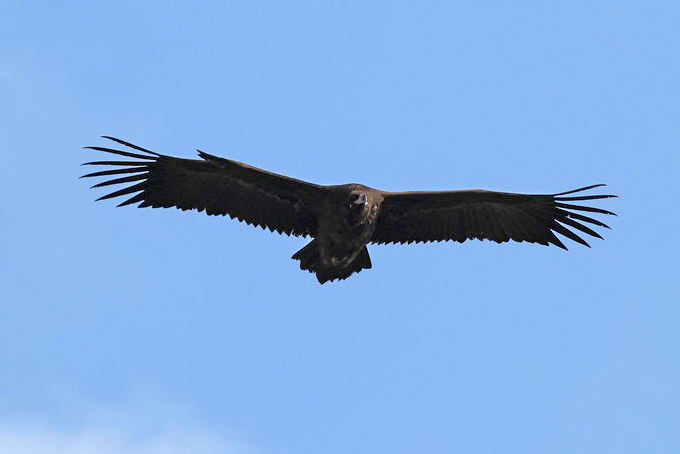

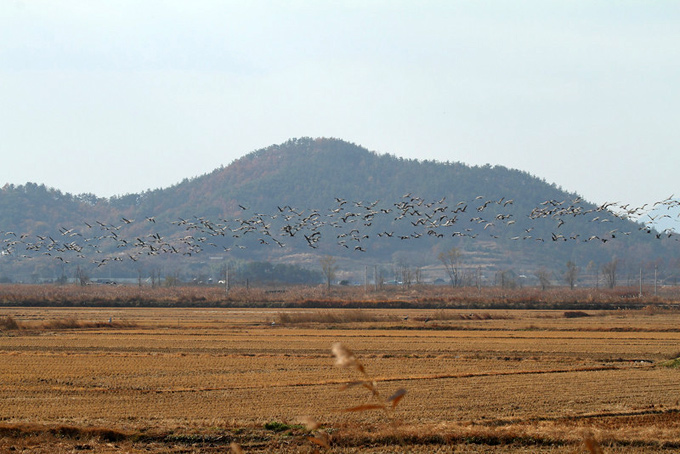
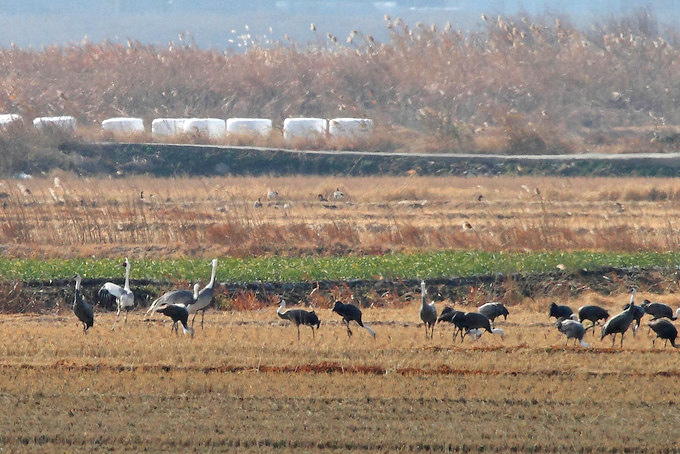
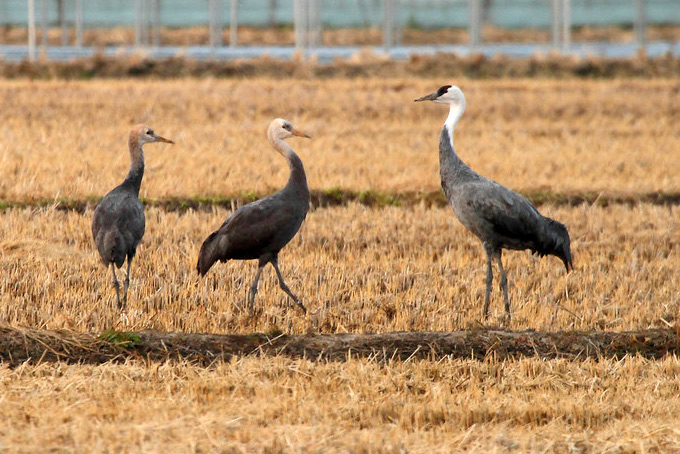
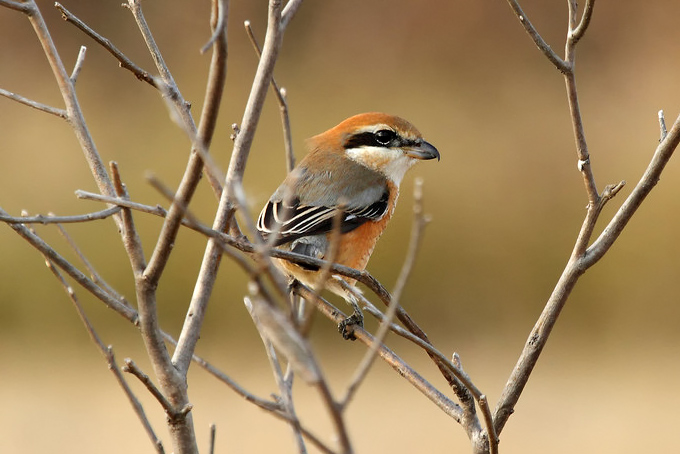
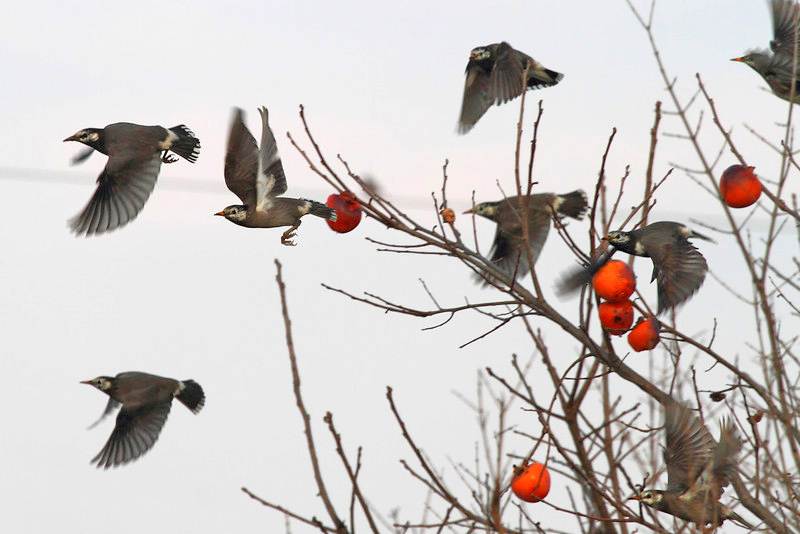
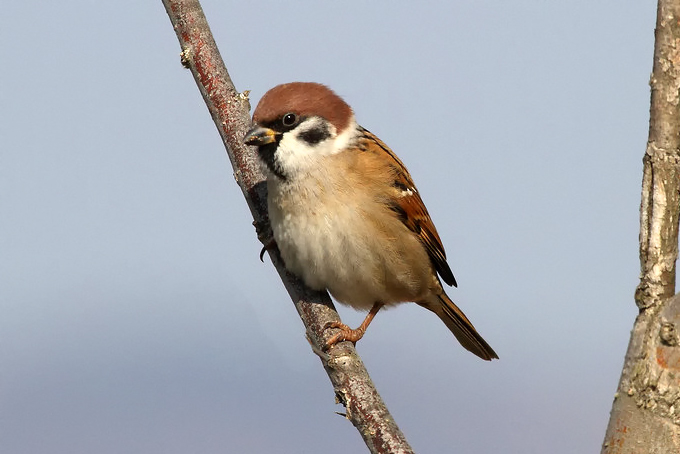
Gangjin Bay, November 25
A visit to the Gangjin Bay on the afternoon to check for Whooper Swans turned out to be a very birdy trip. Strong wind and several rain showers made it occasionally uncomfortable. The first stop was at an observation point that now had undergone a dramatic change. A 14km long paved bicycle path had been constructed along the bay and the observation point had been turned into an open board-walk platform. Now it is impossible to see birds from close range as even just opening a car door makes the birds move away – no shielding as it had been there before.


In the bay ca. 500 to 600 Whooper Swan accompanied by at least 1000 Mallard and about 300 Eastern Spot-billed Duck. Flocks of ducks constantly flying between reed beds and rice fields. Also seen a few Common Goldeneye and one Northern Pintail. In one corner a group of c. 30 Common Merganser with a small group of Spot-billed Ducks could be observed. On a mudflat area along with some swans c. 300 Taiga Bean Geese were mostly roosting while 7 Common Greenshank and 18 Dunlin were busy feeding. Also there one Eurasian Spoonbill, one Great Crested Grebe, one Little Egret and a few Grey Heron. Small numbers of Eurasian Treesparrows, Eurasian Magpie and Brown-eared Bulbul passing by as usual, one Bull-headed Shrike enjoyed a short period of sunshine and a flock of c. 60 Buff-bellied Pipit coming from rice fields was a nice surprise.
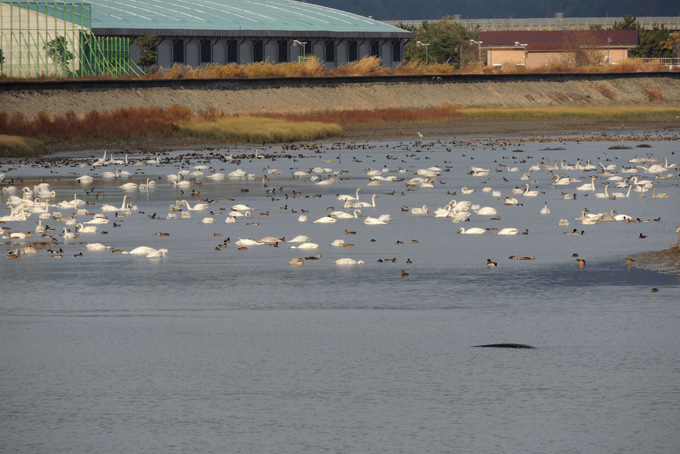
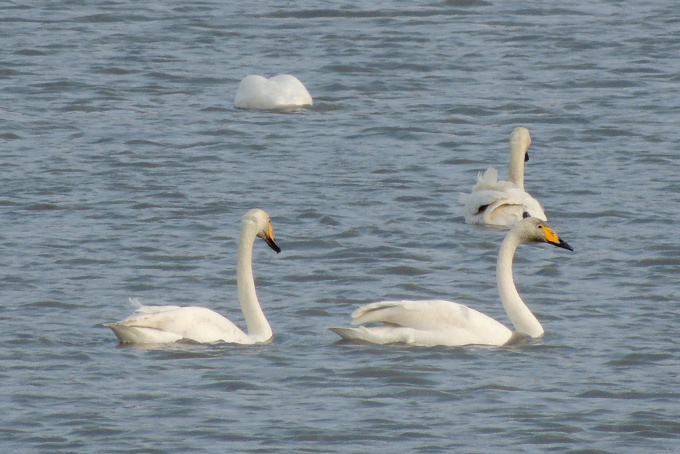
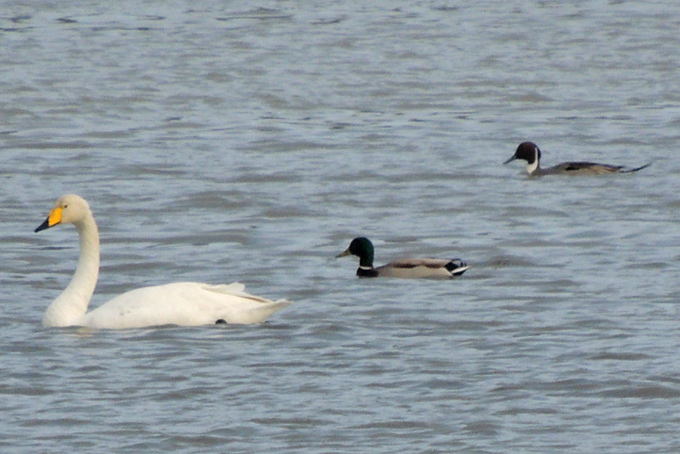
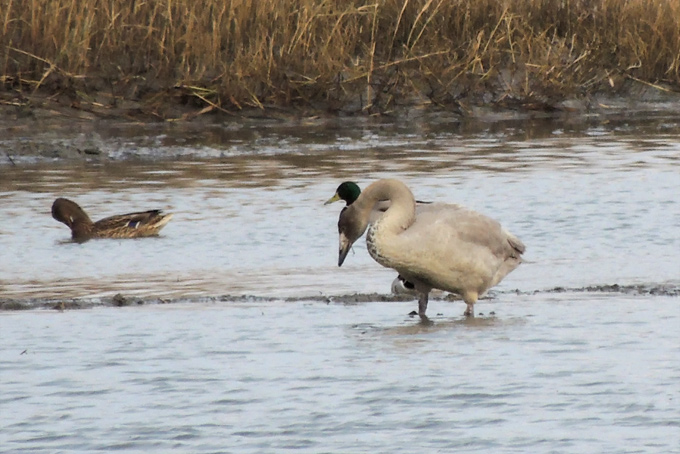
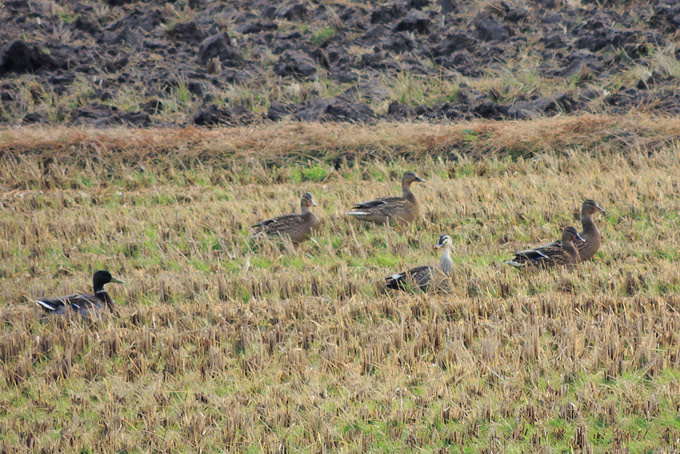
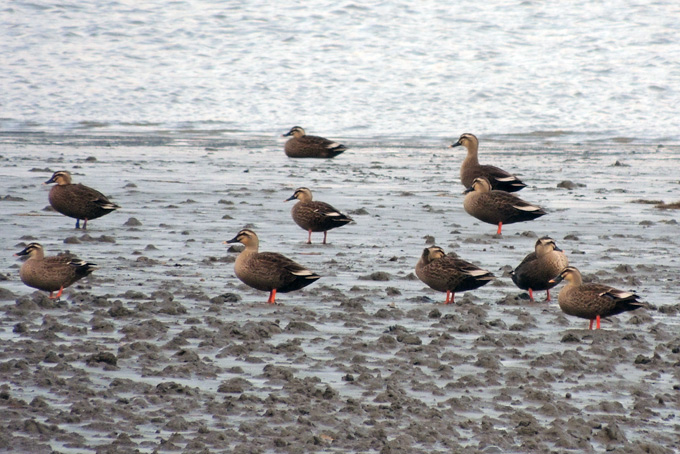
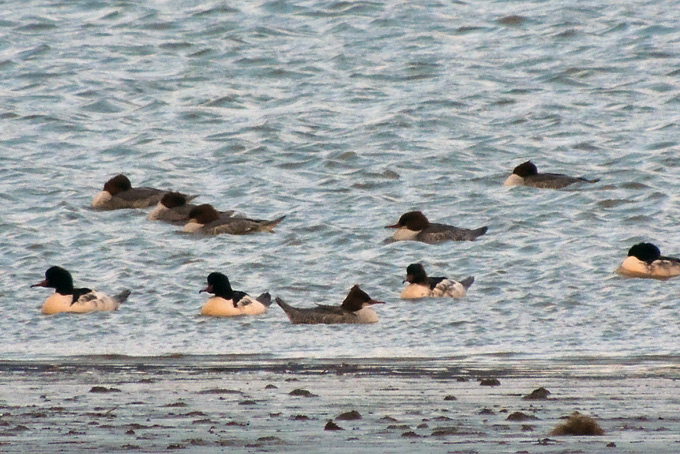
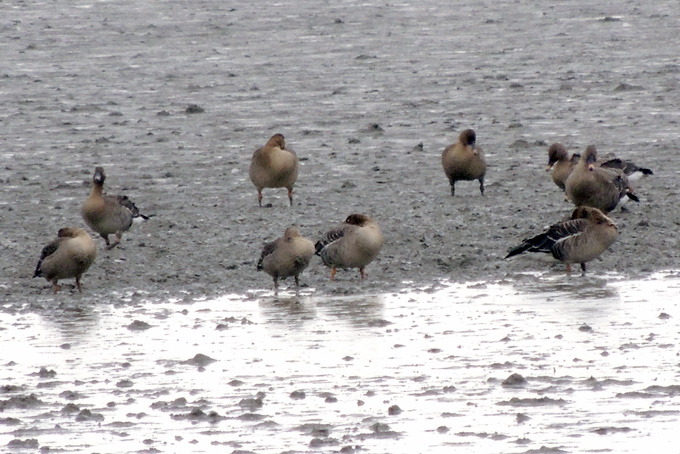
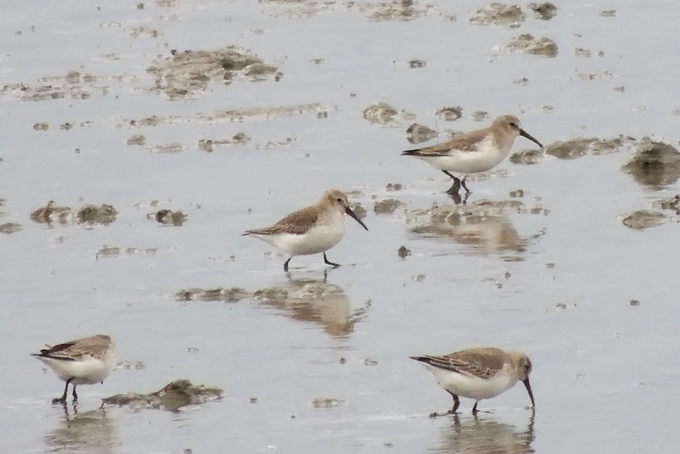
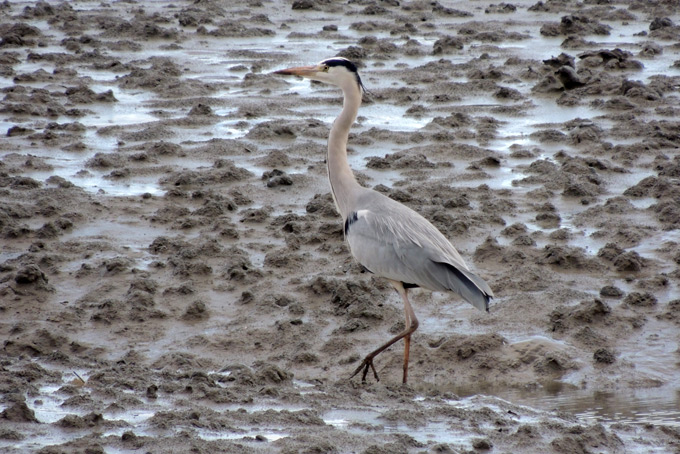
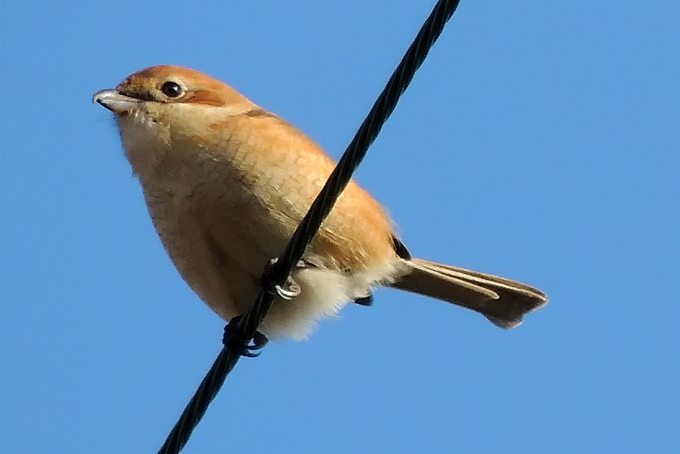
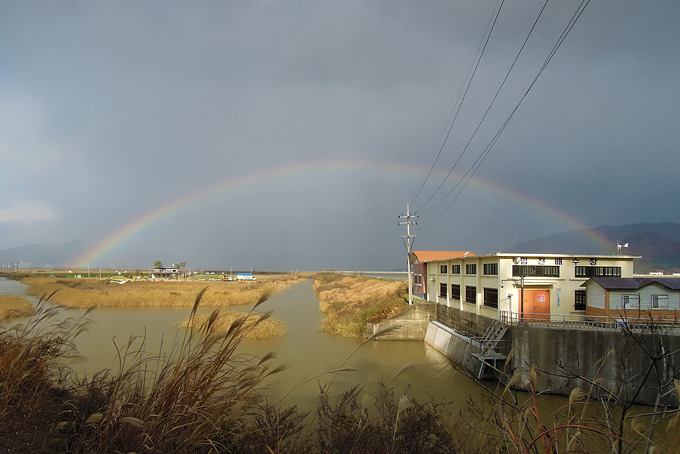
Ulleung and Dokdo, November 20 - 23
A short research trip to Ulleung County from November 20th-23th found a total of c. 74 bird species (including five seen only from inside the ferry between c. 10km north of the Guryongpo Peninsula and Ulleung). Weather throughout was mild, mostly overcast with occasional sunny periods (especially on the 23rd), with overnight temperatures falling to 3-4C and day-time highs reaching 13-15C. Winds were from the west, and were generally either light or moderate.
The main research aims were to determine whether there was much overlap in migrant landbird species on Ulleung Island (at approximately 37.50° N, 130. 86° E), with those found earlier in the month on Baekryeong Island c. 540km to the west-northwest (see: http://www.birdskorea.org/Habitats/Other/Baekryeongdo/BK-HA-Baekryeongdo-Nov-2013.shtml). Main species of interest this visit therefore included Red Crossbill Loxia curvirostra and Common Redpoll Acanthis flammea, in addition to populations and subspecies of more widespread presumably sedentary species (including the “Ulleung Great Tit” Parus minor dageletensis). While much of the centre of the island is mountainous and forested, fieldwork focused on more open areas, including the ‘arboretum’ and hillside behind Sadong harbour in the southeast (on 20th PM); fields and villages at Hyeonpo and Taewa in the northwest (on 21st); and the Nari Basin (in the north) and Taewa again (on 23rd).
A chance conversation with the motel owner (of the excellent M Motel in Dodong, Ulleung) on November 21st also resulted in a wonderful opportunity to visit Dokdo on November 22nd. Well-known to everyone in Korea, Dokdo (at approximately 37.24° N, 131.87° E) is a small cluster of islands and islets approximately 90km southeast from Ulleung and 215km east from Uljin. In addition to being the ROK’s easternmost and most isolated island-group, Dokdo also possesses deep meaning and value to people nationwide. It is “where the Korean Peninsula begins”. While most visitors nowadays are restricted to spending only 20 minutes on the jetty, the Dokdo Management office and police officials most kindly allowed a few of us (including no less than three media teams) to join the county boat as it ferried police and supplies to the island – and then me to spend almost two hours freely searching for birds on the eastern island of Dongdo. Although I was unable to find the ROK’s first Pine Grosbeak that had been recorded there in late October and early-mid November, it was still an excellent experience - to visit these remote Korean islands and also to get some sense of their value (increasingly realised) to migration studies in this part of Korea and in the East Sea. Habitat-wise, the islands of Dokdo are steep-sided, with patches of grasses and some fruiting bushes. They were remarkably ‘birdy’ considering the date and weather, which on the 22nd allowed clear views of Ulleung to the northwest.
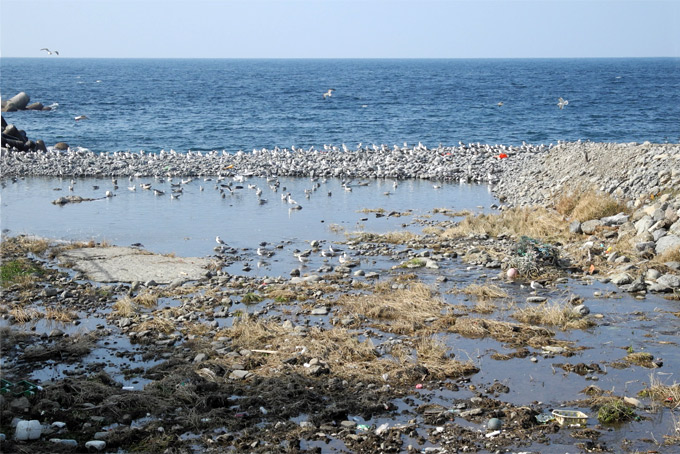
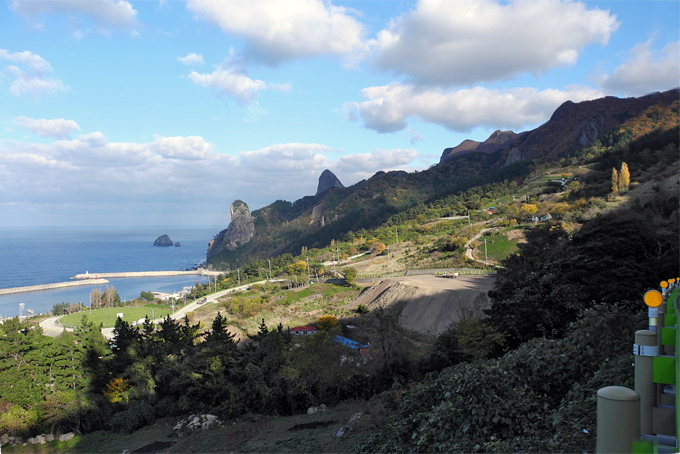
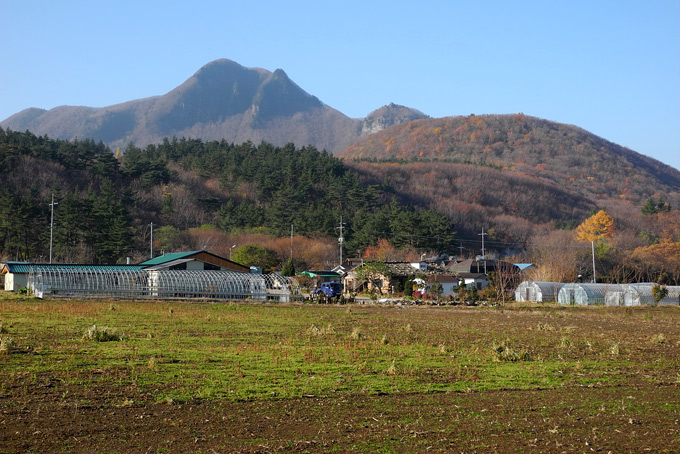
Of course, there is much overlap between these islands (from jurisdiction and administration to geology and birdlife). However, one surprising species on Dokdo, was Tree Sparrow Passer montanus (more or less absent from Ulleung, where it is replaced in summer by the only substantial breeding population of Russet Sparrow P. rutilans in the ROK). Why were they on Dokdo and not on Ulleung?
From this visit to both Ulleung and Dokdo, it was also clear that several species were indeed still on the move in the ROK – including both Red Crossbill and Common Redpoll. Other species of most note included Black Wood Pigeon Columba janthina on several dates; a Snow Bunting Plectrophenax nivalis and Solitary Snipe Gallinago solitaria (on 21st); Common Rosefinch Carpodacus erythrinus (on 22nd); and apparent Meadow Pipit Anthus pratensis and a gull showing several features of Thayer’s Gull Larus thayeri, in among large numbers of other gulls, on the 23rd.
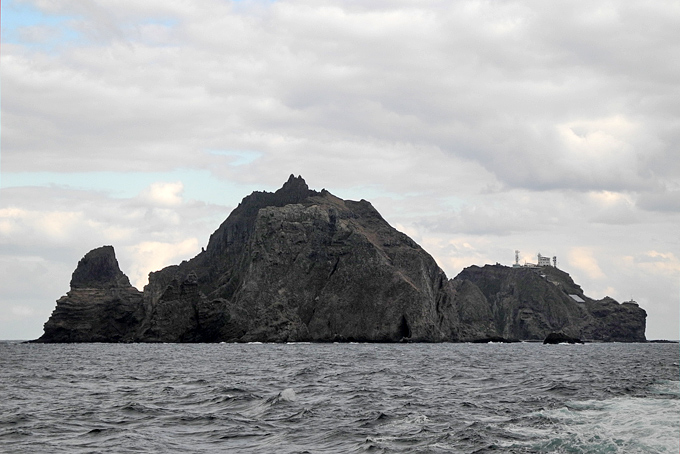
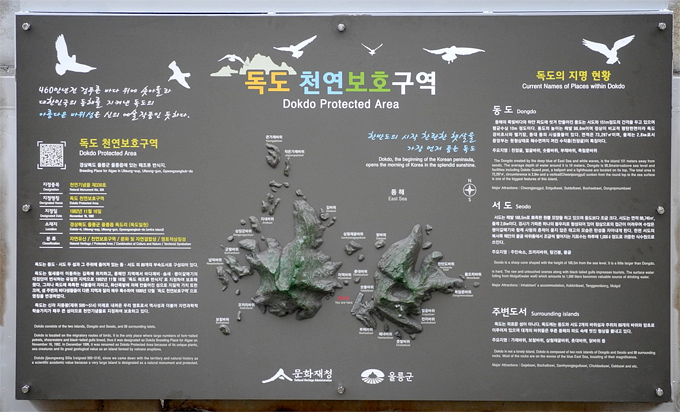
As there is little detailed information publicly available on the birdlife of Ulleung and Dokdo (especially on our websites or in English), a full list of species from this short research visit follows. All are from Ulleung unless specifically stated otherwise. All observations and images were by NM, using a hand-held Nikon Coolpix P7100 and superb Swarovski optics.
- Common Pheasant Phasianus colchicus. Noted daily on Ulleung in small numbers. Apparently introduced on the island.
- Mallard Anas platyrhynchos. On Ulleung, seen only at Taewa, with 12 on the 21st and two on the 23rd. A group of 25 duck – including or comprised entirely of this species – were seen flying south over the sea c. 15km east of Ulleung on the 22nd.
- Eastern Spot-billed Duck Anas zonorhyncha. Six on 21st and three on 23rd.
- Eurasian Teal Anas crecca. Three on the 21st and two on the 23rd.
- Greater Scaup Aythya marila. Two on the 21st.
- Harlequin Duck Histrionicus histrionicus. An adult male and female were in Hyeonpo harbour on the 21st and 23rd.
- White-winged Scoter Melanitta deglandi. One First-winter male was in Hyeonpo harbour on the 21st.
- Common Goldeneye Bucephala clangula. One on the 23rd.
- Common Merganser Mergus merganser. Three on the 21st.
- Red-throated Loon Gavia stellata. From the ferry, in addition to two close to Pohang one was seen c. 150km southwest of Ulleung, all on 20th.
- Streaked Shearwater Calonectris leucomelas. From the ferry, one was seen c. 110km southwest of Ulleung on the 20th and eight were seen between c. 25km and 60km southwest from Ulleung on 23rd.
- Black-necked Grebe Podiceps nigricollis. One was in Hyeonpo harbour on the 21st.
- Grey Heron Ardea cinerea. Four were seen over the sea approaching Ulleung from the east in the evening of the 20th and one was in Taewa on 23rd.
- Temminck’s Cormorant Phalacrocorax capillatus. Fairly widespread with the highest area count 40 along the east coast on the 20th. At least five were also seen on Dokdo.
- Northern Goshawk Accipiter gentilis. A juvenile was in Taewa on the 23rd.
- Eastern Buzzard Buteo japonicus. One or two were seen daily, including one on Dokdo on the 22nd.
- Common Kestrel Falco tinnunculus. One on Ulleung on 21st and one on Dokdo on 22nd.
- Peregrine Falcon Falco peregrinus. Singles were at Hyeonpo and Nari and 2-3 were also on Dokdo on 22nd.
- Common Moorhen Gallinula chloropus. One was in Taewa on the 21st.
- Pacific Golden Plover Pluvialis fulva. Perhaps the oddest observation of this trip was a Pacific Golden Plover at Nari on the 23rd. Not only is this an exceptionally late date, but this bird was also in near full breeding plumage!
- Solitary Snipe Gallinago solitaria. One was at Taewa on 21st. Although looked for on 23rd it was not re-found. The species is probably not recorded annually in the ROK away from the National Arboretum, with most such past records coming from offshore islands (e.g. Gageo and Socheong) during migration or from Gangwon Province.
- Common Snipe Gallinago gallinago. Two (including one with broad white edges to the coverts) were with the Solitary Snipe in Taewa on the 21st. One even seemed to imitate the bobbing feeding motion of the Solitary, before both flew off an hour after sunset.
- Red Phalarope Phalaropus fulicarius. From the ferry, a phalarope in non-breeding plumage seen c.40km southwest of Ulleung on the 23rd was presumed to be this species.
- Black-legged Kittiwake Rissa tridactyla. From the ferry on the 20th, c. 125 were seen 5-10km northwest of the Guryongpo Peninsula; three were seen halfway between Pohang and Ulleung; 20+ were c. 40km southwest of Ulleung; and 25 were within 10km of Ulleung. One adult was also seen close to Sadong harbour on the 20th and 15+ were feeding off from Hyeonpo on the 21st.
- Black-tailed Gull Larus crassirostris. From the ferry on the 20th a total of 55 were seen in open sea, with a further 19 within c. 10km of Ulleung. On Ulleung itself, the highest single count was of 1500 (at Taewa), and there were also c. 1000 at Dokdo on the 22nd.
- Common Gull Larus canus. Two were at Hyeonpo on the 21st and 3+ were at Taewa on the 23rd.
- Thayer’s Gull Larus thayeri (?). A juvenile gull showing multiple features of this species (and a few features perhaps not so typical of thayeri) was at Taewa on the 23rd. As shown in the images, taken in very strong light, structurally it was intermediate in size between Black-tailed and Vega Gull L. vegae, and was also long-winged and slender-billed. Most of the underparts were solidly brown (at times appearing “velvety”), more so that seen in any regularly-occurring Korean gull species, while most of the upperparts, including the wing-coverts, were pale and strikingly frosty-edged. It lacked the darker coverts expected in e.g. L. smithsonianus and was much more strongly patterned than L. schistisagus. The primaries of the closed wing were dark but obviously brown-tinged, with strong white tips for a gull of this age. The upperwing when open showed dark primaries (especially outer edges) contrasting strongly with greyer-washed inner primaries (also ruling out all but an extreme-plumaged L. vegae or L. smithsonianus). The underwing coverts and axillaries were dark brown (latter with a hint of barring) contrasting with silvery undersides to the primaries, which were tipped darker (an underwing pattern shown by very few gull species). The bill was dark (with a hint of some paling – but much less so than all other First Calendar-year gulls that were present for direct comparison) and the legs were pink. While Thayer’s Gull is a rare but regular visitor to Japan, it is recorded less than annually in Korea (with most records being of adults). Informed comments on the images here would therefore be greatly appreciated (NB: there are also several minutes of video that could be sent to any guller interested in helping with its identification).
- Vega Gull Larus vegae. Only small numbers (<10) were noted in open sea during each ferry journey. Much larger numbers were present in main harbours on Ulleung (e.g. 500+ at Sadong and 500+ at Taewa) and also on Dokdo (>1000).
- Mongolian Gull Larus mongolicus. One or two were with other large gulls at Taewa on the 23rd.
- Slaty-backed Gull Larus schistisagus. Small numbers (<50) were seen on Ulleung, and at least three were on Dokdo.
- Heuglin’s Gull Larus heuglini. In total, at least 25 (all apparently taimyrensis) were seen on Ulleung and one or more were also seen on Dokdo.
- Pomarine Skua Stercorarius pomarinus. From the ferry one was seen c. 100km southwest of Ulleung Island on the 20th.
- Ancient Murrelet Synthliboramphus antiquus. From the ferry, one murrelet (presumably this species) was seen c.75km southwest from Ulleung on the 23rd.
- Black Wood Pigeon Columba janthina. Three or more were seen well in trees above Sadong harbour on the 20th; one was seen in flight at Taewa on 21st; and 2+ were seen on Dokdo on the 22nd, sitting on cliff-sides and feeding in berry bushes. All individuals appeared rather dull, with some green gloss on the neck sides and weakly on the breast and mantle, but apparently lacking, as previously noted, obvious pinky-purple tones on the head as shown by (most) adults on Gageo and at some other sites.
- Oriental Turtle Dove Streptopelia orientalis. On Ulleung only seen above Hyeonpo (where 3+ on 21st and one on 23rd), with the highest number (eight) seen on Dokdo on the 22nd.
- Bull-headed Shrike Lanius bucephalus. A total of five were seen or heard on Ulleung.
- Rook Corvus frugilegus. Sixteen were in Hyeonpo on the 21st, with four there still on 23rd when one was also in Nari.
- Large-billed Crow Corvus macrorhynchos. One was in Nari on the 23rd. Bill depth and length appeared closer to more northern than to more southern birds and this individual was therefore most likely to be of subspecies mandshuricus.
- Varied Tit Poecile varius. The most numerous landbird species encountered on Ulleung during this short survey period, with small flocks of 5-10 present in all areas. While many Varied Tit show rufescent tones to the head in autumn (perhaps more than at other times of the year?) birds on Ulleung all appeared strongly washed through with rufous-orange, including weakly admixed into the mantle. They therefore lacked the clean blue and orange appearance of typical mainland Varied Tit.
- Coal Tit Periparus ater. A total of six were encountered on Ulleung.
- Eastern Great Tit Parus minor. Ulleung has its own recognised subspecies, P. m. dageletensis. In total, 35+ were found during this survey on Ulleung. Of note, many birds gave a quite distinctive “tuk” call, recalling Marsh Tit Poecile palustris – a call I personally do not yet associate with Eastern Great Tit. There was much individual variation in plumage in the Ulleung birds – though some perhaps appeared paler and greener-toned above than might be thought typical of mainland birds. At least one individual (perhaps a First Calendar-year?) also showed a fairly strong yellowish wash on the underparts – recalling some images of hybrid P. major and P. minor from Russia. What were the characters used to determine this subspecies first used by Kuroda and Mori almost a century ago, when Ulleung must truly have seemed a remote place? P. Minor and P. major are now both known to be irruptive and in some areas regular partial migrants. P. minor frequently migrate out over the sea, e.g. departing Socheong in their thousands some years. Presumably both species are able to reach Ulleung in the right weather conditions – a distance of only 375km from the DPRK coast to the north and 200km from the ROK coast to the west. Therefore, is it possible that dageletensis might be the result less of prolonged isolation and rather more of occasional hybridisation between Northern and Eastern Great Tit following irruptions?
- Eurasian Skylark Alauda arvensis. Seven at Hyeonpo and perhaps two at Nari. Two larks seen at distance on Dokdo were probably this taxon.
- Far Eastern Lark Alauda japonica. At least 23 were at Nari on the 23rd.
- Brown-eared Bulbul Hypsipetes amaurotis. Present in small numbers (1-5) in all areas that were surveyed on Ulleung.
- Japanese Bush Warbler Horornis diphone. One was heard at Hyeonpo on the 21st.
- Goldcrest Regulus regulus. A total of five were heard on Ulleung.
- Eurasian Wren Troglodytes troglodytes. Five were in Hyeonpo on the 21st, and one was in Taewa on 23rd.
- White-cheeked Starling Spodiopsar cineraceus. Three were on Dokdo on the 22nd.
- White’s Thrush Zoothera aurea. One was between Hyeonpo and Taewa on the 21st.
- Naumann’s Thrush Turdus naumanni. At least four were on Dokdo on the 22nd.
- Dusky Thrush Turdus eunomus. Two were on Dokdo on the 22nd and one was at Nari on the 23rd.
- Daurian Redstart Phoenicurus auroreus. A total of c.15 was found on Ulleung during this survey.
- Blue Rock Thrush Monticola solitarius. A total of six was found on Ulleung and two on Dokdo.
- Eurasian Tree Sparrow Passer montanus. About twenty were around the buildings on Dokdo. None were found on Ulleung
- Siberian Accentor Prunella montanella. At least three were on Dokdo on the 22nd and one was at Nari on the 23rd.
- White Wagtail Motacilla alba. Nine were at Taewa on the 21st with six there still (all lugens) on the 23rd.
- Meadow Pipit Anthus pratensis. One was seen and heard briefly in amongst a flock of c. 20 Buff-bellied Pipit A. rubescens at Nari on the 23rd. Before any images could be taken the flock was flushed by an Oriental Turtle Dove, and appeared to depart south out of the Nari basin. Identification was based on heavily streaked upperparts (contrasting with the plain rump) and underparts; facial pattern (including prominent eye-ring standing out in an otherwise plain “face”); sandy-buff plumage tones – obviously warmer than any of the accompanying pipits, especially on the upperparts and flanks; and pinkish legs and fairly extensive yellowy-orangey base to the lower mandible. This species is (still) very rarely recorded in the ROK and in Japan – with perhaps all records being of birds in late autumn and winter, often with other pipits.
- Olive-backed Pipit Anthus hodgsoni. Small numbers (3-5) were seen or heard each day on Ulleung and three were also on Dokdo.
- Red-throated Pipit Anthus cervinus. One late individual was at Nari on the 23rd.
- Buff-bellied Pipit Anthus rubescens. Eight on the 21st, three on Dokdo on the 22nd and 35+ in total on the 23rd, including 25+ at Nari.
- Brambling Fringilla montifringilla. Twenty-five were at Hyeonpo on the 21st and ten were on Dokdo on the 22nd.
- Hawfinch Coccothraustes coccothraustes. Five were on the cliffs at Dokdo and one was in Nari.
- Eurasian Bullfinch Pyrrhula pyrrhula. One or two were heard in Taewa on the 23rd.
- Common Rosefinch Carpodacus erythrinus. One was on Dokdo on the 22nd: an exceptionally late migrant or one intending to overwinter?
- Long-tailed Rosefinch Carpodacus sibiricus. One on the 21st and two on the 23rd.
- Grey-capped Greenfinch Chloris sinica. Odd “chuw” calls heard on Dokdo from unseen birds on the 22nd were presumed to belong to this species.
- Common Redpoll Acanthis flammea. A flock of 11 on Dokdo on the 22nd contained 3-4 greyish birds with obviously pale rumps. Unfortunately, due to moderate winds and the nervousness of the flock views were insufficient to rule out / rule in Arctic Redpoll A. hornemanni. One was also heard at Nari on the 23rd.
- Red Crossbill Loxia curvirostra. At least 35 were in Nari on the 23rd. Although views of perched birds were distant and brief, all the males seen well (3-5) were pale red and had clearly paler and streaked vents. They can therefore safely be ascribed to subspecies japonica (unlike the males seen earlier in the month on Baekryeong).
- Eurasian Siskin Spinus spinus. One on Ulleung on the 21st and 5+ on Dokdo on the 22nd.
- Pine Bunting Emberiza leucocephalos. Two non-breeding plumaged males were at Nari on the 23rd.
- Meadow Bunting Emberiza cioides. One was heard (but not seen -despite much searching) at Hyeonpo on the 21st.
- Rustic Bunting Emberiza rustica. Two were on Dodko on the 22nd and one was at Nari on the 23rd.
- Yellow-throated Bunting Emberiza elegans. The only bunting encountered every day, with highest counts 3+ on Dokdo and 3+ at Nari.
- Snow Bunting Plectrophenax nivalis. A male (presumably in its First Calendar-year) was at Hyeonpo on the 21st. This species is recorded less than annually in the ROK and there are still probably only 10-15 records in total nationwide.
- Common Pheasant Phasianus colchicus. A few heard.
- Greater White-fronted Goose Anser albifrons. Large flocks.
- Bean Goose. Large flocks.
- Ruddy Shelduck Tadorna ferruginea. 24.
- Gadwall Anas strepera. 8.
- Falcated Duck Anas falcata. 1.
- Mallard Anas platyrhynchos. Several hundred.
- Eastern Spot-billed Duck Anas zonorhyncha. Several hundred.
- Greater Scaup Aythya marila. 6.
- Smew Mergellus albellus. 1.
- Common Merganser Mergus merganser. 5.
- Oriental Stork Ciconia boyciana. 4. Not many birds can make a Grey Heron look small.
- Eurasian Spoonbill Platalea leucorodia. 6.
- Grey Heron Ardea cinerea. Several.
- Great Egret. Several.
- Great Cormorant Phalacrocorax carbo. Several.
- Eurasian Sparrowhawk Accipiter nisus. 2.
- Northern Goshawk Accipiter gentilis. 1. Very crisply marked, almost black and white, with somewhat light structure.
- White-tailed Eagle Haliaeetus albicilla. 1.
- Upland Buzzard Buteo hemilasius. 2.
- Eastern Buzzard Buteo japonicus. 1.
- Common Kestrel Falco tinnunculus. 2. One flew in nearby to devour a frog, disappeared, and came back moments later with an enormous mouse.
- Merlin Falco columbarius. 3.
- Peregrine Falcon Falco peregrinus. 1.
- Black-winged Stilt Himantopus himantopus. 1.
- Northern Lapwing Vanellus vanellus. 3.
- Spotted Redshank Tringa erythropus. 8.
- Eurasian Eagle-Owl Bubo bubo. 1.
- Little Owl Athene noctua. 2. In widely separate spots.
- Common Kingfisher Alcedo atthis. 1.
- Chinese Grey Shrike Lanius excubitor. 2.
- Chinese Penduline Tit Remiz consobrinus. About 12.
- Far-Eastern Skylark Alauda japonica. Constantly heard overhead.
- Vinous-throated Parrotbill Sinosuthera webbiana. Small flocks.
- Daurian Redstart Phoenicurus auroreus. 2.
- Buff-bellied Pipit Anthus rubescens. One flock of about 50.
- Yellow-throated Bunting Emberiza elegans. 2.
- Common Reed Bunting Emberiza schoeniclus. C. 20, very conservatively (more heard).
- Eurasian Sparrowhawk Accipiter nisus 1.
- Eastern Buzzard Buteo japonicus 1.
- Japanese Pygmy Woodpecker Dendrocopos kizuki 2.
- Grey-capped Pygmy Woodpecker Dendrocopos canicapillus 2.
- Greater Spotted Woodpecker Dendrocopos major 1.
- Bull-headed Shrike Lanius bucephalus 1.
- Eurasian Jay Garrulus glandarius 1 (heard).
- Varied Tit Poecile varius 2.
- Marsh Tit Poecile palustris 3.
- Yellow-bellied Tit Periparus venustulus 1.
- Eastern Great Tit Parus minor 5.
- Brown-eared Bulbul Hypsipetes amaurotis 24.
- Long-tailed Tit Aegithalos caudatus 8.
- Vinous-throated Parrotbill Sinosuthera webbiana small flock heard.
- Eurasian Nuthatch Sitta europaea 1.
- Dusky/Naumann’s Thrush Turdus naumanni/naumanni 1 (heard).
- Daurian Redstart Phoenicurus auroreus 2.
- Eurasian Siskin Spinus spinus 8.
- Yellow-throated Bunting Emberiza elegans 3.
- Common Pheasant Phasianus colchicus 2
- Mandarin Duck Aix galericulata 3, all males
- Mallard Anas platyrhynchos 16
- Eurasian Teal Anas crecca 25+
- Tufted Duck Aythya fuligula 21
- Common Goldeneye Bucephala clangula 1, female
- Little Grebe Tachybaptus ruficollis 5
- Little Egret Egretta garzetta 5
- Black-crowned Night-heron Nycticorax nycticorax 1, immature
- Eurasian Sparrowhawk Accipiter nisus 1, male
- Eurasian Coot Fulica atra 1
- Common Sandpiper Actitis hypoleucos 2
- Oriental Turtle Dove Streptopelia orientalis 12
- Japanese Pygmy Woodpecker Dendrocopos kizuki 3
- Great Spotted Woodpecker Dendrocopos major 1, male
- Grey-headed Woodpecker Picus canus 1, female
- Bull-headed Shrike Lanius bucephalus 2, pair
- Eurasian Jay Garrulus glandarius 2
- Azure-winged Magpie Cyanopica cyanus 40+
- Eurasian Magpie Pica pica 16
- Large-billed Crow Corvus macrorhynchos 2
- Eastern Great Tit Parus minor 9
- Long-tailed Tit Aegithalos caudacutus 1
- Brown-eared Bulbul Hypsipetes amaurotis 15+
- Vinous-throated Parrotbill Sinosuthora webbiana 65+
- Daurian Redstart Phoenicurus auroreus 2, female
- Grey Wagtail Motacilla cinerea 1
- White Wagtail Motacilla alba 30+, including lugens, ocularis, and leucopsis
- Japanese Wagtail Motacilla grandis 1
- Buff-bellied Pipit Anthus rubescens 5
- Chinese Grosbeak Eophona migratoria 15+
- Rustic Bunting Emberiza rustica 2
- Yellow-throated Bunting Emberiza elegans 25+
- Rustic Bunting Emberiza rustica 2
- Japanese Quail Coturnix japonica. Noted on only four dates, with 6+ heard in the evening of the 7th the highest number recorded during the period.
- Common Pheasant Phasianus colchicus. Widespread and numerous throughout the island, with birds even seen perched on overhead wires and foraging on open tidal-flat.
- Swan Goose Anser cygnoides. Two were with the Taiga Bean Goose flock in the marsh at Hwadong on the 12th.
- Taiga Bean Goose Anser fabalis. Close views of the goose flock were only obtained from the 7th onwards, when 1,000-1,200 Taiga Bean were present in rice-fields near the main reservoir and in the adjacent marsh at Hwadong. Although very large-bodied, many still appeared shorter-necked and slighter-bodied than many of the Taiga Beans wintering in the southeast of the country (e.g. at Joonam).
- Tundra Bean Goose Anser serrirostris. Close views of the goose flock were only obtained from the 7th onwards. The majority of bean geese (c. 850) on the 4th appeared to be serrirostris. However, there were probably only 50 or so present by the end of the survey period.
- Greylag Goose Anser anser. One was found near the main lake on the 10th, and was still present on the last day of survey on the 12th. This species has been recorded reliably in the ROK probably fewer than ten times (with some recent claims relating to hybrid or domestic geese, as in early 2013, or to confusion with juvenile frontalis Greater White-fronted Goose).
- Greater White-fronted Goose Anser albifrons. Up to three were present within the main goose flock, including one pink-billed adult (perhaps referable to albifrons) and one orange-billed juvenile (most likely from the sometimes unrecognised Northeast Asian frontalis population).
- Mute Swan Cygnus olor. Two (a juvenile and a presumed Second-winter) were present throughout in the marsh. This species is a rare winter visitor to the ROK (with some recent records perhaps related to the growing feral population in Japan?).
- Whooper Swan Cygnus cygnus. Eleven were see flying in from the northwest at midday on the 10th; two were present on the main reservoir that evening; and 11 were present in the marsh on 12th, including one neck-collared bird (“C 60”). According to the EAAFP website (at: http://www.eaaflyway.net/documents/wg/eaaf_anatidae_colormarkings_v2.pdf) , “C60” was initially banded at Sharga Nuur in Mongolia on July 15th 2009, and was then photographed by Dr. Kim Shin-Hwan in Cheonsu Bay on January 8th 2011.
- Ruddy Shelduck Tadorna ferruginea. Two in the marsh on the 10th were still present there on the 12th.
- Gadwall Anas strepera. Present on the main reservoir daily from the 2nd, with a high count of five on the 10th.
- Falcated Duck Anas falcate. Present on the main reservoir daily from the 2nd, with the high count six on the 12th.
- Eurasian Wigeon Anas Penelope. One was on the main reservoir on the 12th.
- Mallard Anas platyrhynchos. The second commonest duck during the survey, with 750 on the 10th the highest day count.
- Eastern Spot-billed Duck Anas zonorhyncha. The commonest duck during the survey, with >100 along the coast and a high count of 950 on the main reservoir on the 7th.
- Northern Shoveler Anas clypeata. Present throughout the survey on the main reservoir with a high count of 15+ on the 10th.
- Northern Pintail Anas acuta. Present throughout the survey in the marsh and on the main reservoir with a high count of only four (on the 10th).
- Baikal Teal Anas formosa. Recorded on five dates on the main reservoir, with four on the 2nd the highest count.
- Eurasian Teal Anas crecca. Recorded on five dates on the main reservoir and in the marsh, with 30 on the 2nd and 20 on 10th and 11th.
- Common Pochard Aythya farina. Up to 25 were present on the main reservoir throughout the survey period.
- Tufted Duck Aythya fuligula. Present throughout the survey period on the main reservoir, increasing from four on 1st to 20 during 10th-12th.
- Greater Scaup Aythya marila. One or two were present on the main reservoir throughout the survey period.
- White-winged Scoter Melanitta deglandi. Present throughout the period in or close offshore from several bays, especially in the southwest of the island. The highest count in a single scan was 140 on the 2nd.
- American Scoter Melanitta americana. Present in small numbers on the east and south coasts, with 15 on 12th the highest count. Of note, all birds seen were adult males – with individuals calling constantly and apparently displaying to each other.
- Common Goldeneye Bucephala clangula. First observed on the 10th (when two were on the main reservoir), increasing to four by the 12th.
- Smew Mergellus albellus. Two were present on the main reservoir on the 12th.
- Common Merganser Mergus merganser. First noted on the 7th, increasing to 15 on the main reservoir by the 12th.
- Red-breasted Merganser Mergus serrator. Recorded on only three dates, with the high count being four on the 2nd.
- Little Grebe Tachybaptus ruficollis. Rather widespread with 40 on the 4th the highest count, and probably more than 100 present on the island. Most of the birds on the main reservoir (25+ most dates) were adults in non-breeding plumage. However, on smaller wetlands, several family groups were heard and seen, with juveniles begging adults (several of which retained much of their breeding plumage). It appears that the species is likely double-brooded on the island (as birds also appeared to be actively paired and in territory here in May).
- Great Crested Grebe Podiceps cristatus. Present in small numbers throughout the survey period, both on the sea (5-10 birds) and on the main reservoir (c. 15 most dates).
- Black-necked Grebe Podiceps nigricollis. Present in small numbers throughout the survey period, with the highest count seven on the 2nd and 12th.
- Oriental Stork Ciconia boyciana. One was seen in flight towards the east on the 1st; two were seen in flight over the marsh on 2nd; and three were together in the marsh from 10th-12th. As a search of rice-fields and wetland areas found no storks between 3rd and 9th it seems that six birds were probably present during the survey period (including birds on active migration). Could the Hwanghaenam-Shandong crossing be used regularly during migration by this species?
- Eurasian Spoonbill Platalea leucorodia. One adult was in the marsh on the 2nd; a First Calendar-year was present there on 6th and 7th; and there was one there on the 10th, three on the 11th and four on the 12th.
- Grey Heron Ardea cinerea. Present throughout, with 20 on the 4th the highest day count.
- Great Egret Ardea alba. Present throughout the survey, with five modesta and five alba on 2nd, and 10+ alba on 11th and 12th.
- Intermediate Egret Egretta intermedia. One on the 2nd, two on the 4th and the last singles seen on the 5th and 6th.
- Little Egret Egretta garzetta. Singles recorded on 4th and 12th were the only records.
- Chinese Egret Egretta eulophotes. One, with a damaged wing, was first found on the main beach on the 12th. As this was the first day to check this area the bird might already have been present for some time.
- Pelagic Cormorant Phalacrocorax pelagicus. Present throughout the survey period, mostly in the west and southwest, with the high count 45+ on the 7th.
- Temminck’s Cormorant Phalacrocorax capillatus. Widespread and fairly numerous with 150+ recorded on several dates.
- Western Osprey Pandion haliaetus. Present throughout, with a high count of four on the 4th, decreasing to just one on the 11th and 12th.
- Japanese Sparrowhawk Accipiter gularis. A total of 12 “observations” during the survey, with the high count three on the 7th.
- Eurasian Sparrowhawk Accipiter nisus. Recorded daily, with a total of 22 “observations” and a peak of four on 5th and 7th.
- Northern Goshawk Accipiter gentilis. Observed daily, with a total of 19 “observations” (most of which were juveniles), including a peak of 3+ on 4th and a huge grey-toned adult on 12th.
- Black Kite Milvus migrans. Small numbers (mostly First year birds, though some adults) were recorded daily, with 15 (mostly in the west) on 4th and on the 9th, 14 watched going to roost in Jincheon in the east being the highest day counts.
- Upland Buzzard Buteo hemilasius. A pale morph adult was present north of the main reservoir from 4th to the survey end, with a second bird (presumably a First-winter) also seen by the main reservoir on the 10th.
- Eastern Buzzard Buteo japonicus. The most numerous raptor during the survey, seen daily, with a total of c.100 “observations” and a peak count of 25 on the 7th.
- Common Kestrel Falco tinnunculus. Seen daily, with a total of 24 “observations” and a peak of four on 4th. Most appeared heavily marked, though at least two appeared to be obviously paler and might have been perpallidus.
- Amur Falcon Falco amurensis. A juvenile on the 1st was the only record.
- Eurasian Hobby Falco subbuteo. One late adult was seen in the east on the 5th and in the west on the 6th.
- Peregrine Falcon Falco peregrinus. Between one and five were seen daily. Two peregrine-sized brown-backed falcons (one with contrastingly darker wing-tips) seen distantly on the 4th were either juvenile Peregrine migrating across the island or instead Saker Falcons F. cherrug.
- Brown-cheeked Rail Rallus indicus. One seen in the marsh on 2nd, and another probable was heard at the main reservoir the same day.
- Eurasian Coot Fulica atra. One was on the main reservoir on the 12th.
- Northern Lapwing Vanellus vanellus. Between two and four were in Hwadong on the 4th, with singles seen also on the 6th, 7th and 12th.
- Common Snipe Gallinago gallinago. One was heard (probably departing) an hour after sunset on 7th.
- Far Eastern Curlew Numenius madagascariensis. One on the remaining tidal-flat in the southeast on the 2nd and 9th appeared to have a damaged wing.
- Green Sandpiper Tringa ochropus. One was in the marsh on the 7th.
- Black-headed Gull Chroicocephalus ridibundus. Two on the 2nd was the only record.
- Black-tailed Gull Larus crassirostris. The most numerous gull species, seen daily, with 300+ on the 6th the highest day count.
- Vega Gull Larus vegae. Recorded almost daily, with a peak count of 10 on the 10th.
- Mongolian Gull Larus mongolicus. Recorded almost daily in small numbers, with a high count of 15 on the 11th.
- Heuglin’s Gull Larus heuglini. Seen only on the 10th and 11th during strong northerly winds when 8+ were on the remaining tidal-flat in the southeast. All were taimyrensis.
- Oriental Turtle Dove Streptopelia orientalis. Seen daily, with 30+ seen on several dates (with no clear evidence of movement).
- Northern Scops Owl Otus semitorques. An owl giving a “whoop” call at forest edge on the 2nd and two owls giving a range of calls (including a rapidly-repeated “whoop” and a lapwing-like “ee-veet”) on the 6th and 7th in a different area were likely to be this taxon. Very poor recordings were made which will later be compared with recordings of owls of known identity. Any recordings of owl taxa or links to such recordings will be gratefully received (and acknowledged)…
- Long-eared Owl Asio otus. One was seen briefly in Samgot Ri on 10th.
- Great Spotted Woodpecker Dendrocopos major. Singles were seen in different parts of the island on 2nd, 3rd and 5th.
- Ashy Minivet Pericrocotus divaricatus. One very late migrant was heard and seen in high flight towards the northwest on the 6th.
- Bull-headed shrike Lanius bucephalus. Recorded daily in small numbers, with the highest count ten on the 6th.
- Great Grey Shrike Lanius excubitor. A First-winter sibiricus was in Samgot Ri on the 10th. This is probably only the second record of this subspecies in the ROK (the last being one on Socheong on October 24th 2009). The species is still listed as V2 by Birds Korea (i.e. less than ten records nationally).
- Chinese Grey Shrike Lanius sphenocercus. One first seen north of the main reservoir on the 6th was still present in the same area on the 12th.
- Eurasian Jay Garrulus glandarius. Noted daily, with several small flocks in sustained flight and a high count of 25 on the 5th.
- Azure-winged Magpie Cyanopica cyanus. Apparently more localised than in May, being recorded on only five dates and only in the west of the island (with a high count of 10 in Junghwadong and 1-2 in Yeonhwa Ri).
- Eurasian Magpie Pica pica. Recorded on seven dates, with the high count only three.
- Daurian Jackdaw Coloeus dauuricus. Recorded on five dates, with eight on the 3rd and 4th and 3-5 from the 9th to the 12th.
- Rook Corvus frugilegus. Recorded on seven dates, first from 3rd, with the high count 100+ on 10th.
- Large-billed Crow Corvus macrorhynchos. Recorded daily, with the high count 20 on the 2nd but less than 10 found each day from the 10th to 12th despite coverage of much of the island.
- Coal Tit Periparus ater. Recorded daily, with a total of 230 “observations”, and the highest day count 75+ on 5th. Some birds were seen in high flight, suggesting intended emigration.
- Yellow-bellied Tit Periparus venustulus. Recorded on eight dates and in several parts of the island, with 28 “observations” and the highest day counts of eight on the 5th and 6-8 on the 9th. Of note, this species was recorded (and banded) in early October this year at Muraviovka Park in Russia (see: http://www.amurbirding.blogspot.kr/search?updated-max=2013-10-14T17:51:00%2B10:00&max-results=7), probably the first Russian record. The species appears to be continuing to expand its range rapidly north-eastward. Before the first ROK record in 2005, and recent records in Japan, the species was considered to be endemic to China.
- Eastern Great Tit Parus minor. Recorded daily, with 152 “observations” and high counts of 25 on the 5th and 10th.
- Chinese Penduline Tit Remiz consobrinus. Recorded on only five dates, with the high count 3+ on 1st.
- Asian Short-toed Lark Calandrella cheleensis. One strikingly pale individual was on one of the main tracks through the rice-fields on 1st, heard again there on the 4th and was perhaps seen briefly in the same area again on 11th (but not on 12th, despite much searching). Of note, between one and three were reported in Gangneung on the northeast coast of the mainland on the 1st, with at least one still present there on the 3rd.
- Eurasian Skylark Alauda arvensis. Recorded on seven dates, with the highest day count 15 on the 12th.
- Far Eastern Skylark Alauda japonica. One was present on 1st and 2nd.
- Light-vented Bulbul Pycnonotus sinensis. Recorded daily, with 317 “observations’. A single flock of 30 was present in the northeast on the 3rd. This seemed remarkable (in the Korean context – as the species was only first recorded in the ROK in late October 2002), until 65 were seen in a single flock in the southwest on the 9th, with at least 85 present in the same area on 11th. Of interest a flock “many hundred in number” were reported at Laoteishan in Liaoning, China (one major peninsula north from Hwanghaenam / Baengryeong) on November 8th (see: http://www.birdforum.net/showthread.php?t=165968&page=39). Like the Yellow-bellied Tit (and a few other small to medium sized landbirds tolerant of artificial or degraded habitats), this species has expanded its range north-eastwards massively during the past decade.
- Brown-eared Bulbul Hypsipetes amaurotis. Recorded daily, with 305 “observations” and a high count of 50+ on the 6th.
- Barn Swallow Hirundo rustica. Recorded only between 3rd and 6th, with a high count of ten.
- Asian House Martin Delichon dasypus. A single on the 3rd was the only record.
- Red-rumped Swallow Cecropis daurica. Two on the 6th was the only record.
- Korean Bush Warbler Horornis borealis. Recorded on six dates, with 11 “observations” and a high count of three on both the 2nd and 6th.
- Long-tailed Tit Aegithalos caudatus. Presumably present throughout but only seen / heard on seven dates, with a high count of eight on 5th. All individuals seen were white-headed.
- Siberian Chiffchaff Phylloscopus collybita. One tristis was digiscoped poorly in the southeast of the island on the 5th. Although increased observer activity might explain some of the recent increase in records in the ROK of this species, it also seems probable that it is occurring more frequently now than only a decade ago (personally, this is about my ninth record of the species in the ROK – with all but two being in the past three years).
- Radde’s Warbler Phylloscopus schwarzi. Singles were heard and seen on the 2nd and 5th.
- Pallas’s Leaf Warbler Phylloscopus proregulus. Remarkably scarce (considering its status in November on Socheong and Gageo), with one on the 7th the only record.
- Yellow-browed Warbler Phylloscopus inornatus. Recorded daily until the 7th, with a peak count of 7+ on the 2nd, and the last record one on 12th.
- Far Eastern Cisticola Cisticola juncidis. One on the 4th was the only record.
- White-eye sp. Zosterops sp. One heard on the 2nd was the only record.
- Goldcrest Regulus regulus. Fairly numerous and widespread, recorded daily with 220 “observations” and a peak count of 50+ on the 5th.
- Eurasian Wren Troglodytes troglodytes. Recorded daily with 35 “observations”, with 5+ on the 9th and 12th the highest day counts.
- White-cheeked Starling Spodiopsar cineraceus. Recorded on eight dates, with the highest day count four on the 3rd.
- Common Starling Sturnus vulgaris. Two (one First-winter and one non-breeding adult) were in Junghawdong on the 2nd.
- Grey-backed Thrush Turdus hortulorum. One on the 4th and another on the 5th were the only records.
- Pale Thrush Turdus pallidus. One on the 5th was the only record.
- Red-throated Thrush Turdus ruficollis. An adult male was seen briefly on the 2nd in the southeast. Most thrushes, however, were extremely secretive and / or flighty so most (several hundred “Dusky-Naumann-Darkthroats”) were not identified to species.
- Naumann’s Thrush Turdus naumanni. Recorded certainly on only five or so dates – with all 28 thrushes seen properly out of 200 in flight over the southeast of the island on the 12th being this species.
- Dusky Thrush Turdus eunomus. Recorded almost daily. With most of the 120 thrushes seen in flight on the 2nd thought to be this species.
- Siberian Rubythroat Luscinia calliope. Surprisingly scarce, with only two heard (singles on the 5th and 9th) during the survey.
- Red-flanked Bluetail Tarsiger cyanurus. Remarkably scarce considering its status on other islands in late October and early November, being recorded on only six dates with two on the 3rd and 5th the highest day count.
- Daurian Redstart Phoenicurus auroreus. Recorded daily, with 114 “observations”, including highest day counts of 20 on the 2nd and 5th.
- Stejneger’s Stonechat Saxicola stejnegeri. Recorded almost daily, with 28 “observations” including a peak count of six on the 11th.
- Blue Rock Thrush Monticola solitarius. One philippensis on the 3rd was the only record.
- Eurasian Tree Sparrow Passer montanus. Present in every village and town on the island in small numbers (10-30), with the highest day count 50 (on the 12th) and an island population of probably several hundred.
- Siberian Accentor Prunella montanella. Recorded on only four dates, with ten on the 5th, 6+ on the 6th, 10+ on the 9th and at least 18 (all in the east of the island) on the 12th.
- Eastern Yellow Wagtail Motacilla tschutschensis. Only one record: one in Samgot Ri on the 12th.
- Grey Wagtail Motacilla cinerea. Singles were recorded on three dates (last on the 9th).
- White Wagtail Motacilla alba. Recorded daily, with 92 “observations”, and the highest day counts of 35 on the 2nd and 30 on the 6th. Three subspecies were recorded, with ocularis the most numerous, and only 2-3 leucopsis and a total of five lugens.
- Richard’s Pipit Anthus richardi. Singles were recorded on the 2nd, 4th and 5th.
- Olive-backed Pipit Anthus hodgsoni. Recorded in small numbers daily, with 90 “observations” and a peak count of 20 on the 2nd.
- Red-throated Pipit Anthus cervinus. One or two recorded on seven dates, most regularly until 7th, though with one or two still present also on the 12th.
- Buff-bellied Pipit Anthus rubescens. The commonest pipit, recorded daily, with 106 “observations”, with 25+ on the 2nd and 20+ on the 12th the highest day counts.
- Brambling Fringilla montifringilla. The most numerous landbird during the survey period, especially during the first week. There was a total of 5,520 “observations” with a high count of 1,500 on the 2nd (including one flock of 600 in Jincheon). Migration seemed to trail off after the 9th (when 700 were seen in the west of the island).
- Hawfinch Coccothraustes coccothraustes. Recorded daily from the 2nd, with 105 “observations”, including the highest day count of 20+ on the 2nd and 3rd.
- Chinese Grosbeak Eophona migratoria. Recorded on four dates, with five in the west on the 2nd; five in the east on the 3rd; one on the 9th and three in the east on the 12th.
- Eurasian Bullfinch Pyrrhula pyrrhula. Recorded daily in small numbers from the 5th, with 20 “observations”. Most records were of calling birds in high overhead flight so none were identified to subspecies.
- Common Rosefinch Carpodacus erythrinus. Recorded on seven dates, daily until the 7th and then again on 12th (a single). The highest day count was 10, on the 2nd, when an adult male was also seen (at Junghwadong).
- Long-tailed Rosefinch Carpodacus sibiricus. Recorded in small numbers (1-3) on eight dates.
- Pallas’s Rosefinch Carpodacus roseus. Recorded daily only between the 2nd and the 6th, with 23 “observations” in total including a high count of eight on the 2nd.
- Grey-capped Greenfinch Chloris sinica. Found in steadily increasing numbers throughout the survey period, with the highest count 75+ on the 12th. Many of the vocalisations sounded distinctly different from those given by birds in south-eastern ROK.
- Common Redpoll Acanthis flammea. Redpolls were recorded in overhead flight on six dates, with eleven “observations” including a high count of four on the 12th. Only two birds were seen reasonably well – both were Common Redpoll. It seems possible that 2013/ 2014 might be a decent winter for the species in the ROK and the wider region (with birds also reaching Beijing on November 3rd: http://birdingbeijing.com/).
- Red Crossbill Loxia curvirostra. Recorded daily until the 9th, with a single outlier on the 12th and a total of 288 “observations” including c. 100 on the 2nd. Most birds were seen only in flight and appeared to be remarkably (and atypically) shy. As can be seen in a couple of very poor record shots, those males that were seen well (a dozen or more) appeared all-red below, lacking the paler sometimes streaked vent often shown by subspecies japonica (the only subspecies so far claimed in the ROK). As we also found the first Red Crossbill for Rudong County (Jiangsu Province, China) this October which was similarly all- red below, it is tempting to consider that these birds might well be originating from further west than in normal irruptions. Of note, Brazil’s East Asia field-guide states that subspecies tianschanica of “of C Asia and W China winters to Liaoning and Hebei” and images of this subspecies from Kazakhstan (http://www.birds.kz/subspeciesbest.php?sspecies=627&l=en) seem closer to those seen on Baekryeong than most images of japonica (including those in our gallery at: http://www.birdskorea.org/Gallery/Species/BK-GA-Loxia-curvirostra.shtml). It would be great to see more (and much better!) images of this taxon / these taxa this winter!
- Eurasian Siskin Spinus spinus. Recorded daily with 1250 “observations” including the highest day count of 250 on the 9th.
- Pine Bunting Emberiza leucocephalos. Recorded on eight dates, with 45 “observations” (involving probably 35-40 individuals in total). Observations of this typically scarce species were as follows: 5-6 on the 6th; 10-17 on the 3rd; 11-12 on the 4th; three on the 5th and 6th; one on the 7th and 11th and two on the 12th. Probably ten adult males were seen, showing a very wide range of plumage features, from much black to almost no black on the crown sides. One female type seen in flight only on the 3rd, appeared weakly yellow below – but could not be re-found despite much searching.
- Meadow Bunting Emberiza cioides. Widespread in more open areas. Recorded daily, with 228 “observations” and a highest day count of 40 on both the 6th and the 12th.
- Tristram’s Bunting Emberiza tristrami. Recorded on only three dates, with three on the 2nd, and 2+ on the 9th and 10th.
- Chestnut-eared Bunting Emberiza fucata. Recorded on six dates, with the highest count 3+ on 5th.
- Little Bunting Emberiza pusilla. Recorded daily, with 133 “observations” and highest day counts of 30 on the 6th and 20 on the 12th.
- Yellow-browed Bunting Emberiza chrysophrys. A female was in Junghwadong on the 9th and 11th.
- Rustic Bunting Emberiza rustica. The most numerous bunting, especially until the 6th, with a total of 2,400 “observations”, more than half of which were between the 2nd and the 6th. The highest day counts were 800 on the 2nd and 500 on the 6th. Numbers were lowest on the 10th (when only 10 were logged) recovering somewhat to 120 by the 12th.
- Yellow-throated Bunting Emberiza elegans. The second most numerous bunting with 995 “observations” and the peak in number on 5th and 6th when 150+ and 200 respectively were counted.
- Chestnut Bunting Emberiza rutila. Singles on three dates with two on the 6th the highest day count and the final observation.
- Black-faced Bunting Emberiza spodocephala. Remarkably scarce, being recorded on only eight dates, with a total of only 14 “observations” including a high count of five (on the 4th).
- Pallas’s Reed Bunting Emberiza pallasi. Recorded daily, with 141 “observations” and a high day count of 30 on the 1st
- Ochre-rumped Bunting Emberiza yessoensis. Recorded on four dates, with at least eight “observations” and a high count of c.5 on the 2nd.
- Common Reed Bunting Emberiza schoeniclus. Recorded almost daily, with 75 “observations” and highest day counts of 25+ on the 3rd and 20+ on the 6th.
- Lapland Longspur Calcarius lapponicus. Recorded on seven dates, with 1-3 most dates, and a high count of 26+ on the 4th.
- Mandarin Duck Aix galericulata (8)
- Little Grebe Tachybaptus ruficollis (1)
- Grey Heron Ardea cinereus (2)
- Solitary Snipe Gallinago solitaria (2, including 1 flyover)
- Oriental Turtle Dove Streptopelia orientalis (2)
- Eurasian Eagle-Owl Bubo bubo (1)
- Japanese Pygmy Woodpecker Dendrocopos kizuki (4)
- Grey-capped Pygmy Woodpecker Dendrocopos canicapillus (2)
- Great Spotted Woodpecker Dendrocopos major (3)
- Bull-headed Shrike Lanius bucephalus (2)
- Eurasian Jay Garrulus glandarius (3)
- Eurasian Magpie Pica pica (2)
- Large-billed Crow Corvus macrorhynchos (9+)
- Marsh Tit Poecile palustris (4)
- Varied Tit Poecile varius (3)
- Coal Tit Periparus ater (5)
- Yellow-bellied Tit Periparus venustulus (9+)
- Eastern Great Tit Parus minor (16+)
- Long-tailed Tit Aegithalos caudacutus (7)
- Eurasian Nuthatch Sitta europaea (2)
- Eurasian Treecreeper Certhia familiaris (1 BS, PB, MPB)
- Brown-eared Bulbul Hypsipetes amaurotis (40+)
- Yellow-throated Bunting Emberiza elegans (30+)
- Rustic Bunting Emberiza rustica (60+, JL)
- Brown Dipper Cinclus pallasii (1, JL)
- Hawfinch Coccothraustes coccothraustes (18+)
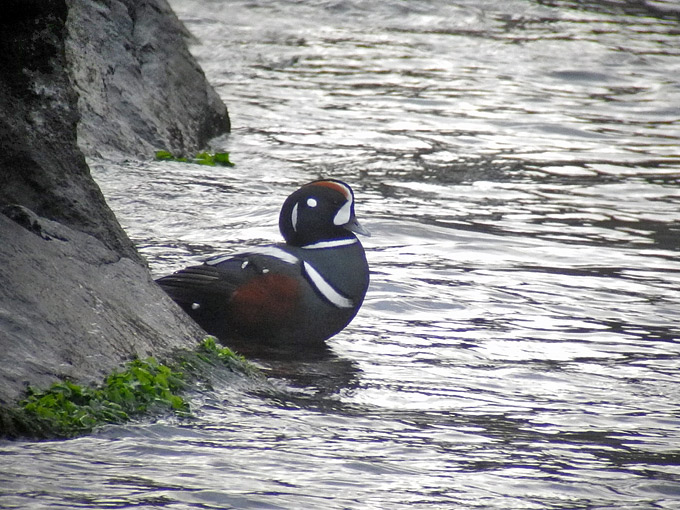
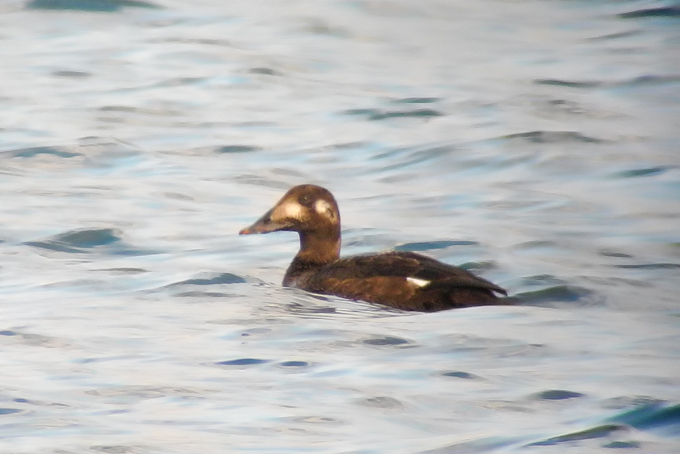
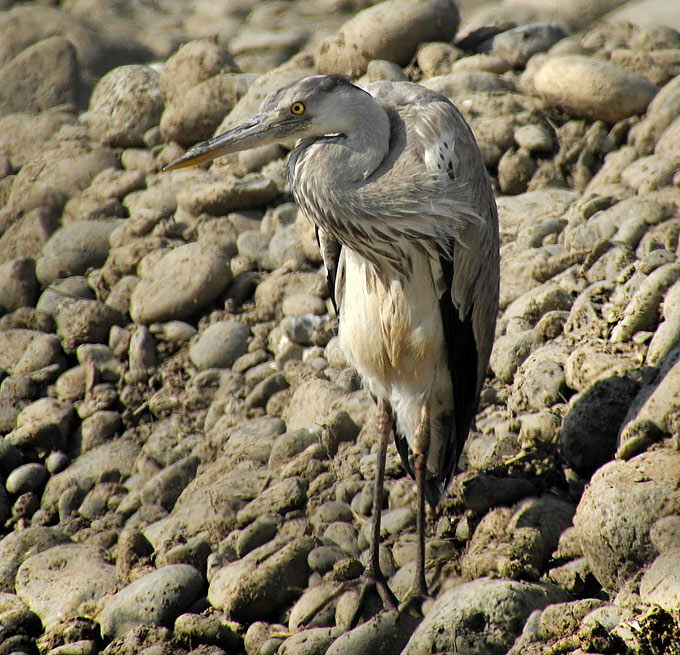
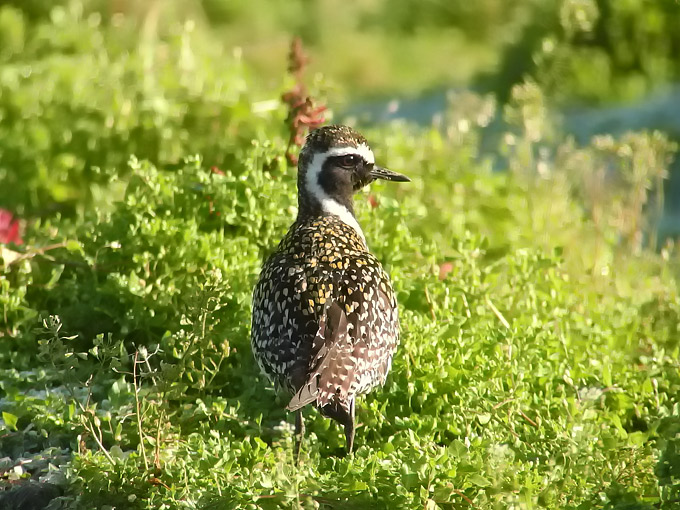
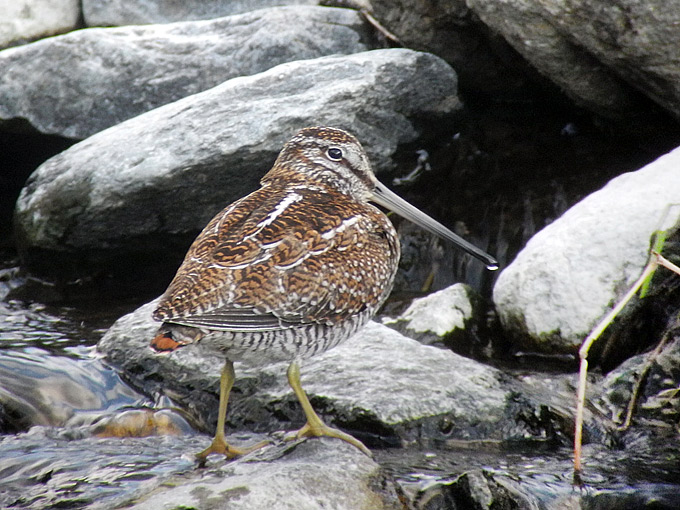

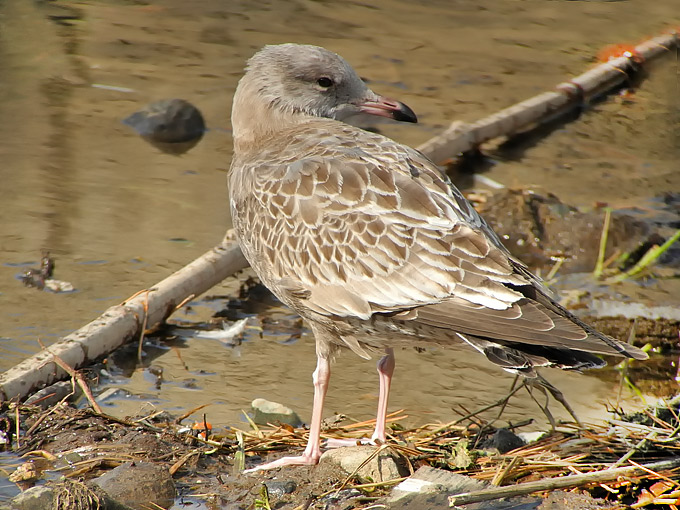
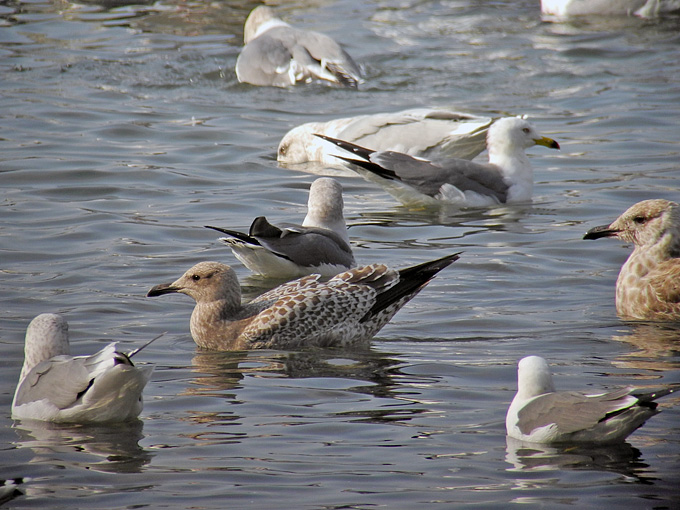
Showing elongated, delicate structure and size (in direct comparison with L. crassirostris, L. vegae and L. schistisagus).
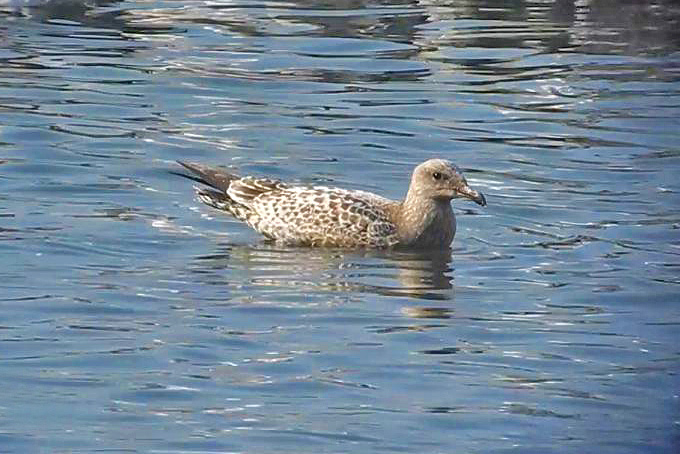
Showing brown tone of otherwise fresh-looking primaries.
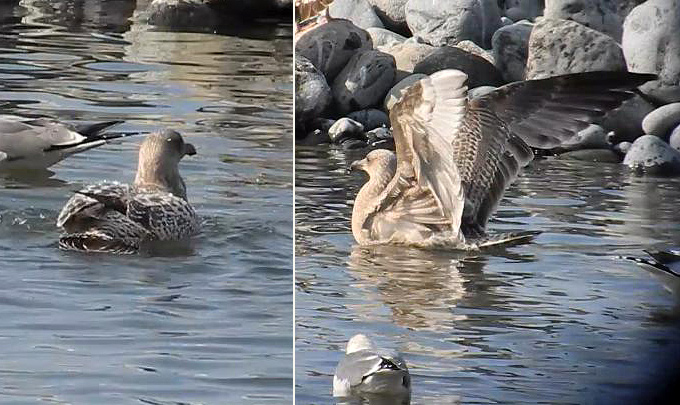
Showing rump and tail (left) and underwing (right).

Showing upperwing.
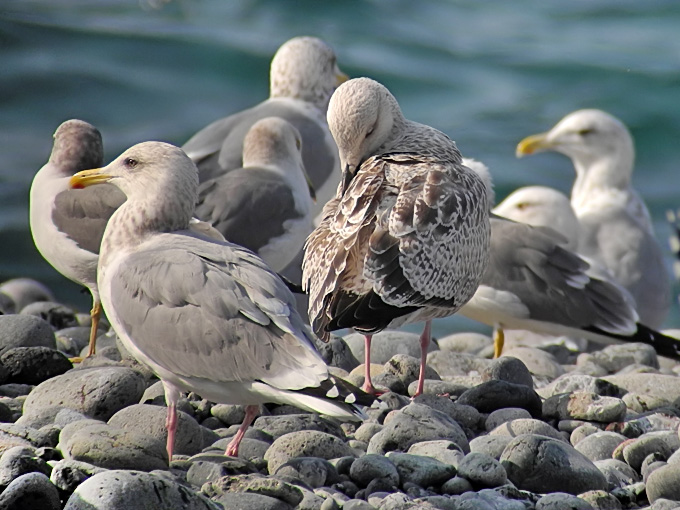
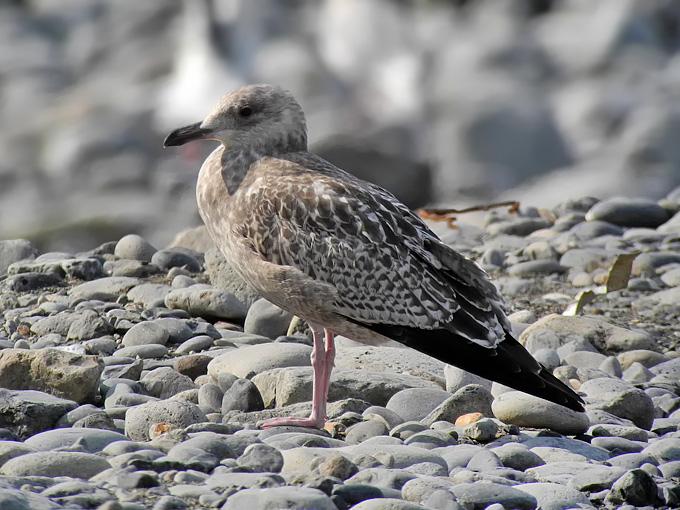
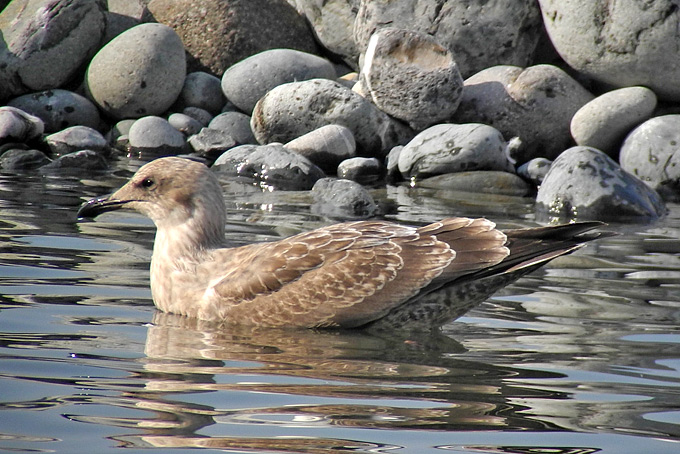
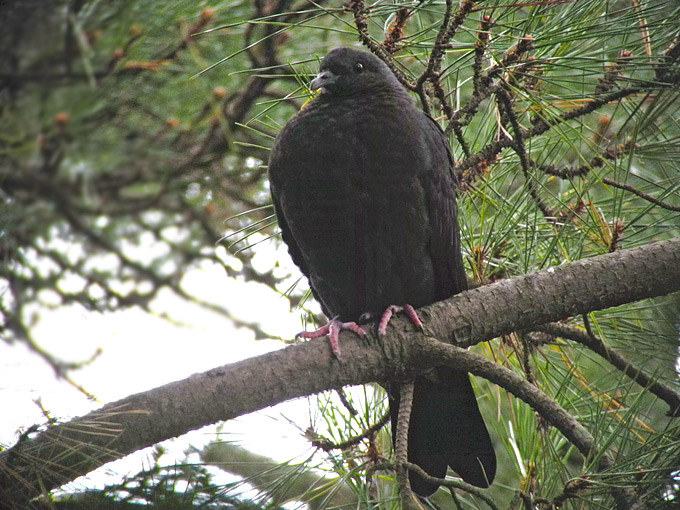

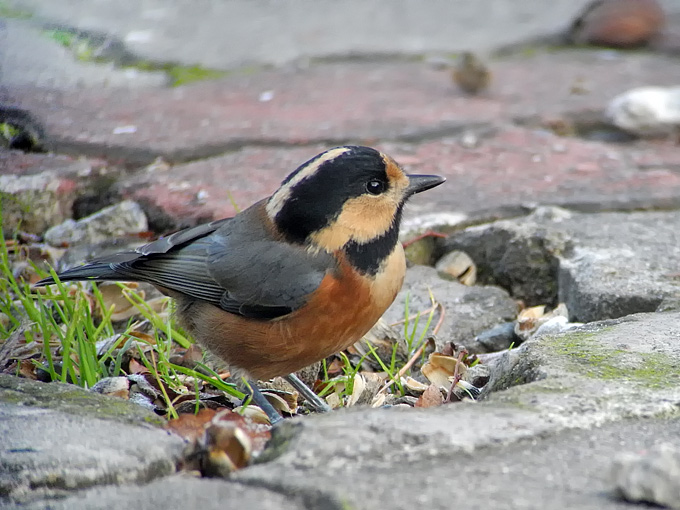
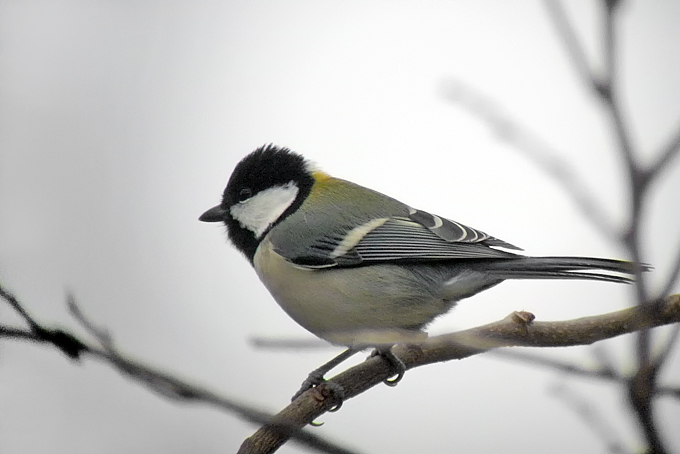
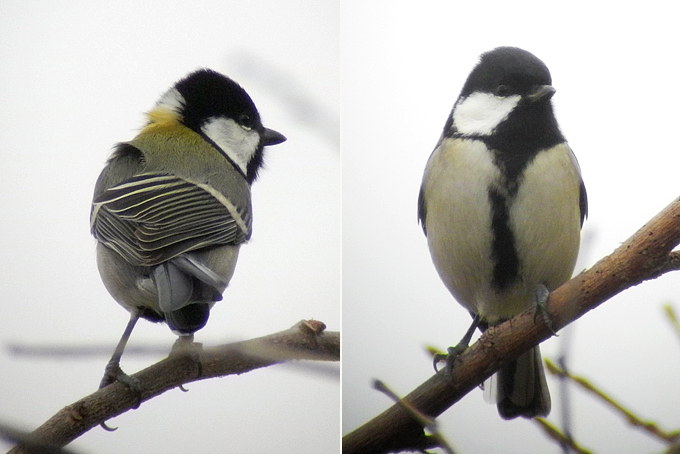



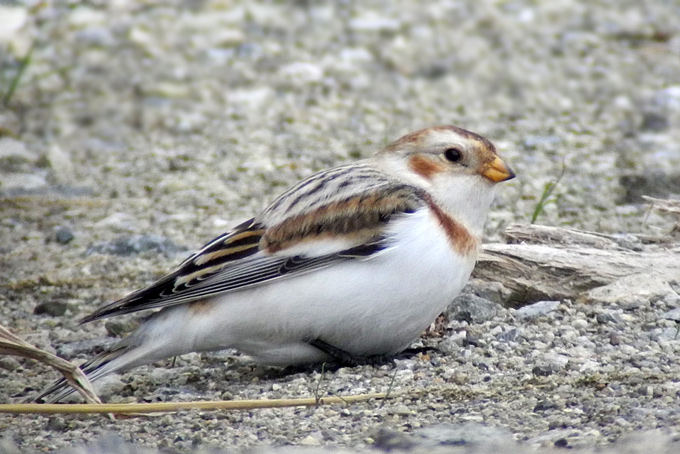
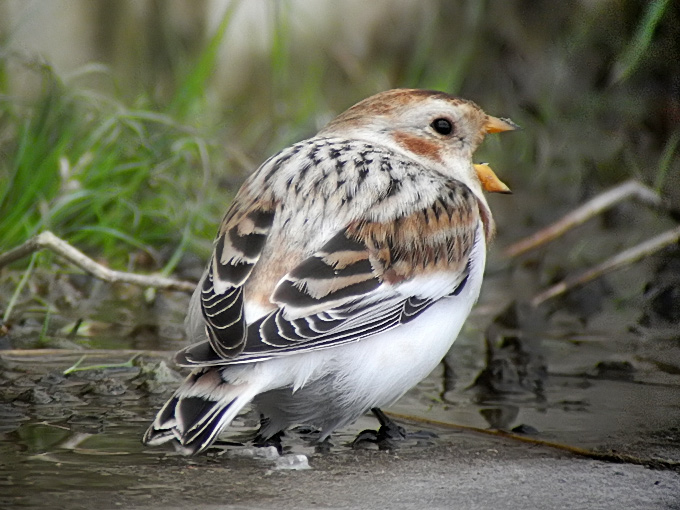
Hwaseong, November 23
A full and productive day around Hwaseong’s reclamation area of reeds, channels, lake, scrub—and, unfortunately, ever-increasing industrial construction. Highlights were Korea’s smallest and largest owls, an encouraging number of storks, and evidence of good numbers of mice and the raptors that feed on them.

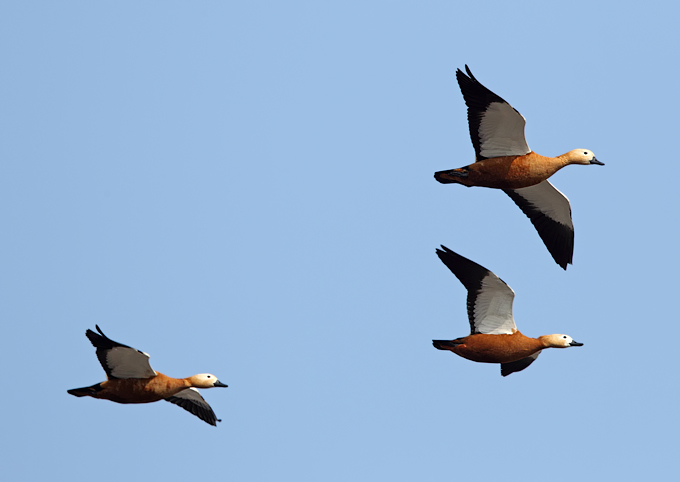
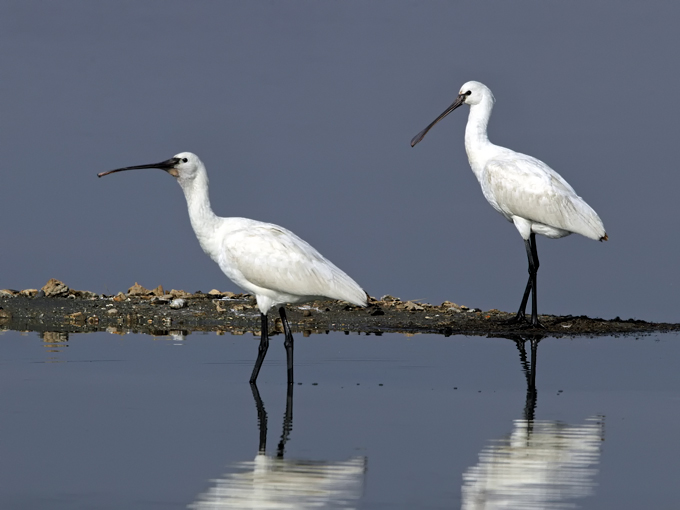
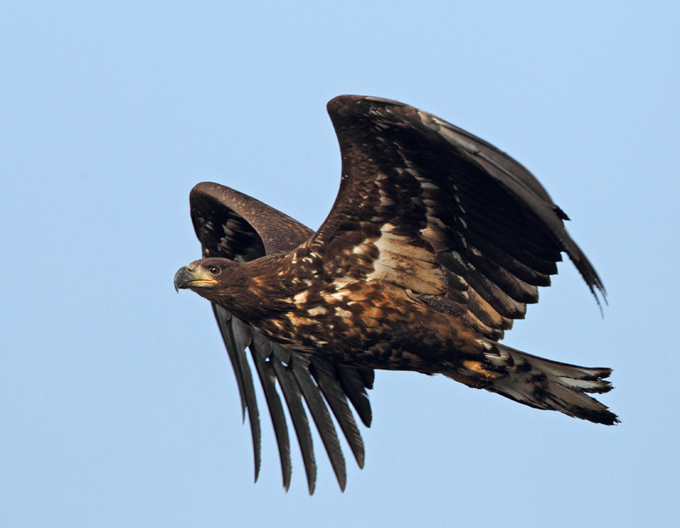
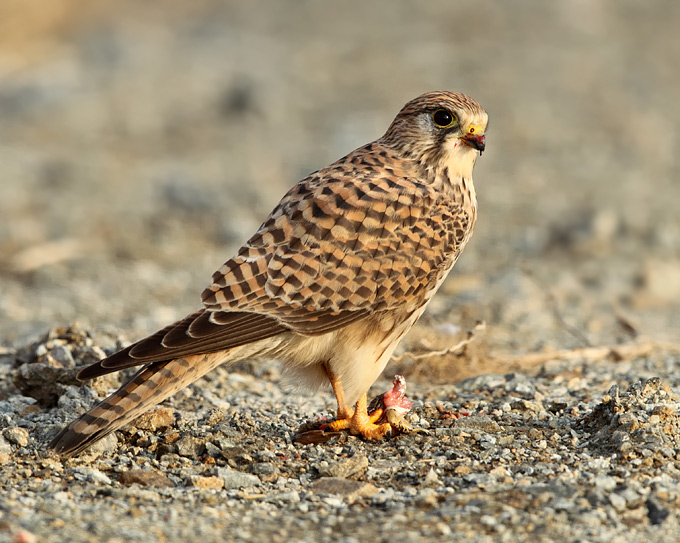
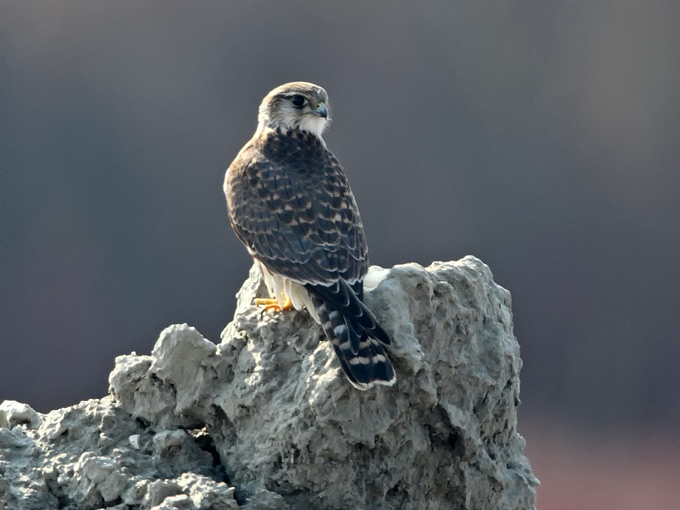
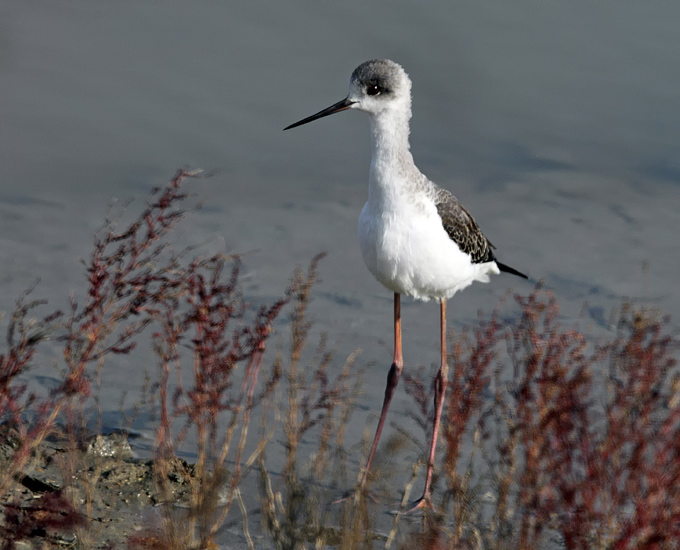
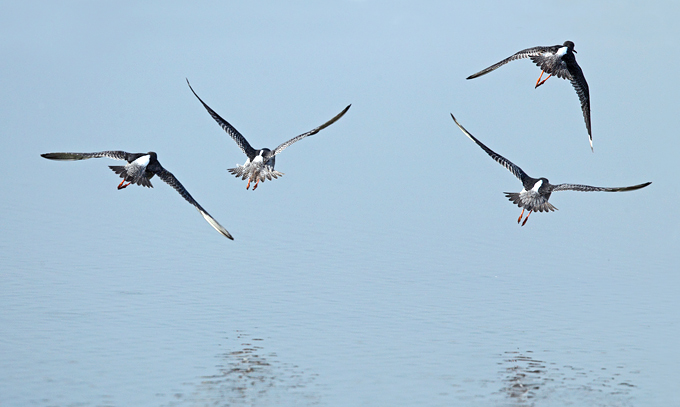
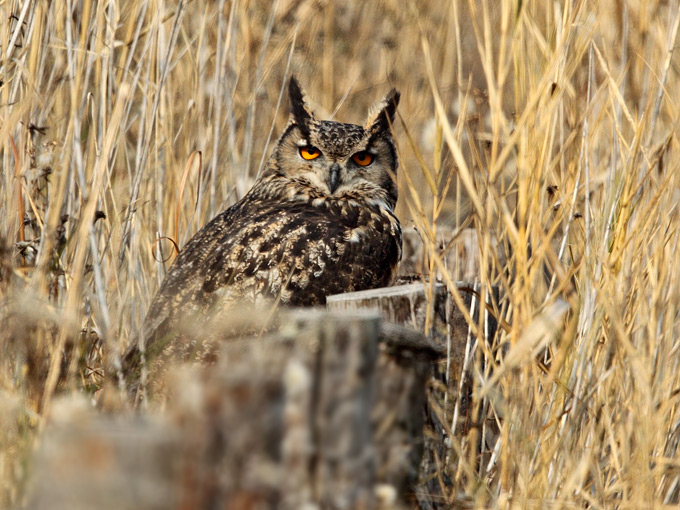
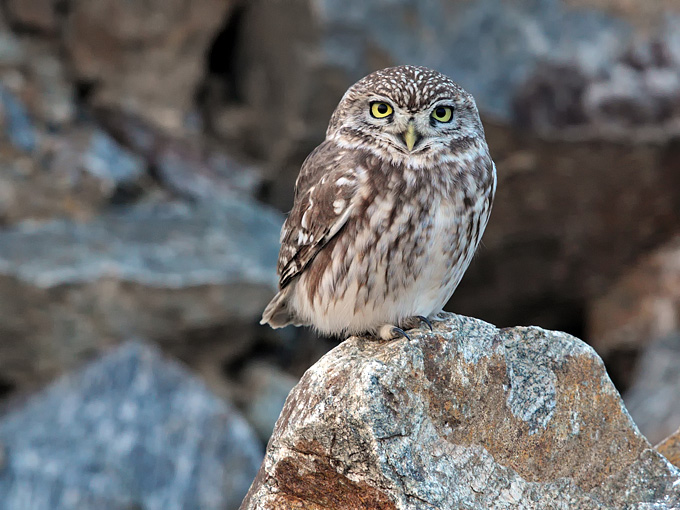

Gwangneung National Arboretum, November 20
An afternoon only at the Sumeokwan:
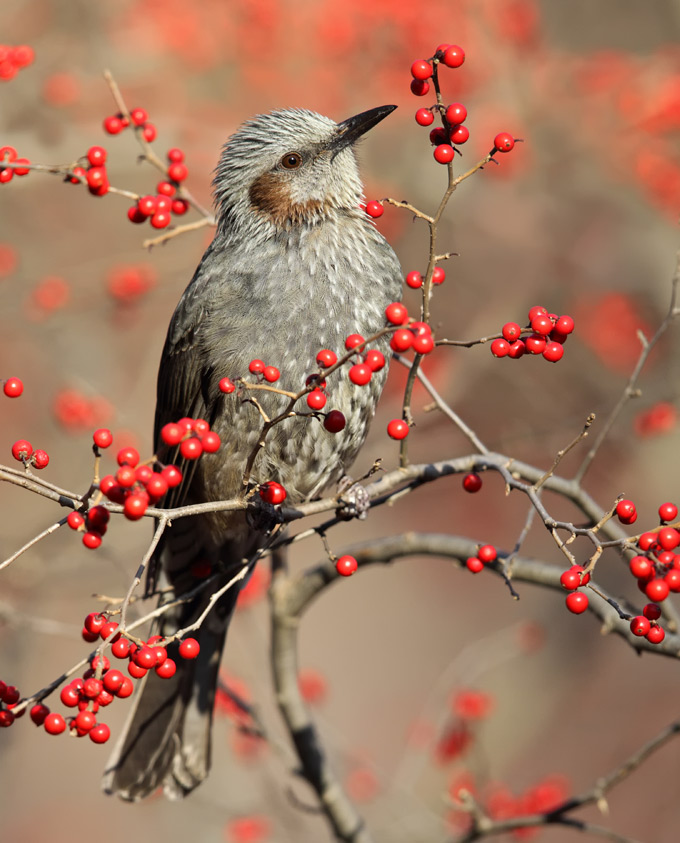

Gwangju, November 16
I spent a pleasant, though cold, morning at the Gwangjuho Lake Eco-park in Chunghyo-dong, Gwangju. The water levels have been brought down, exposing a lot of the shoreline, which attracted quite a few wagtails and waterfowl. Thirty-four species were tallied, including:
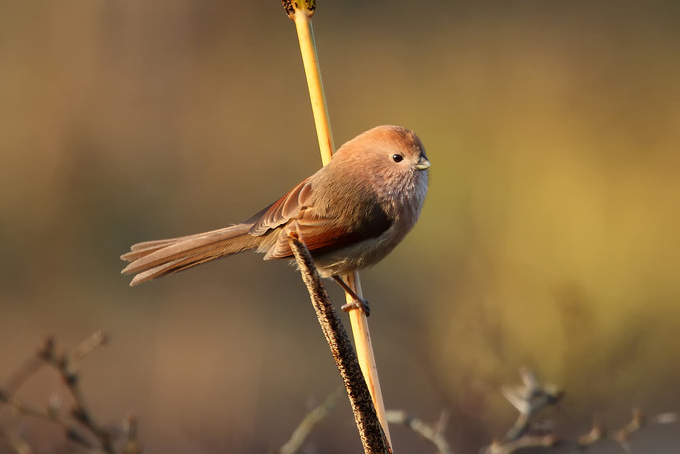
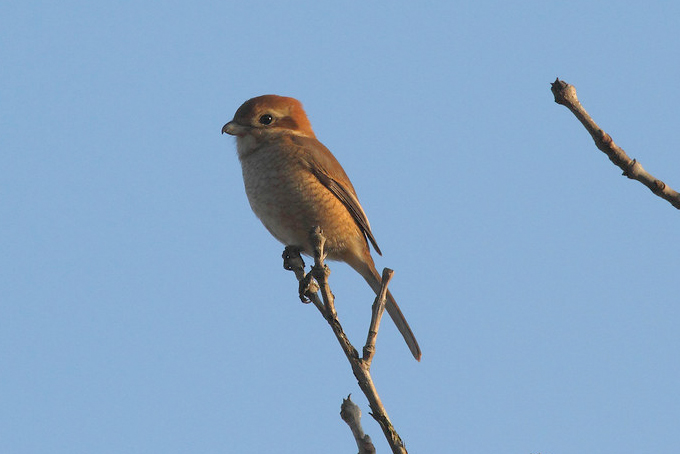
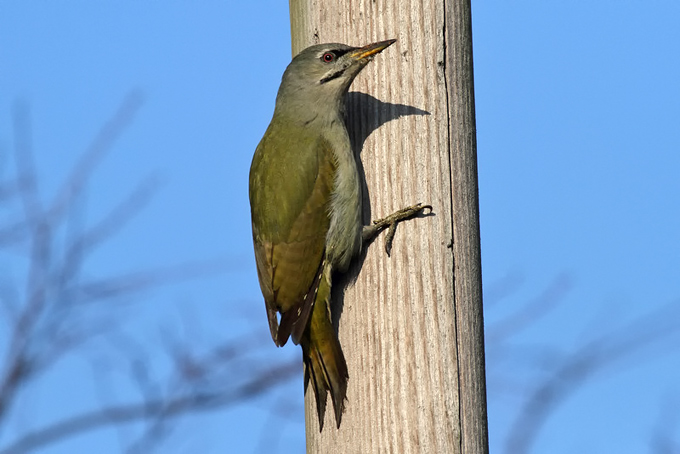
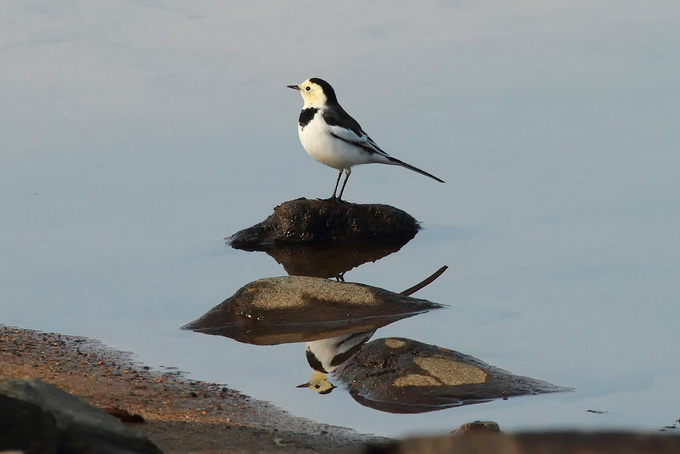
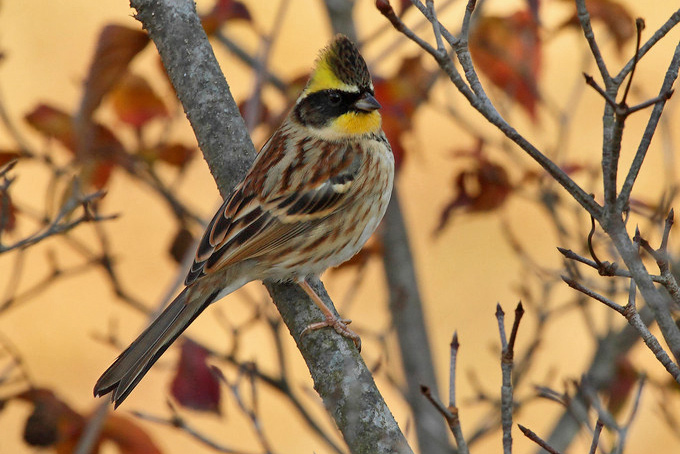
Baekryeong Island, November 1 - 12
After survey visits in March and May, a late autumn survey was conducted on one half-day (November 1st) and ten full days between November 2nd and 12th on Baekryeong Island, Ongjin County. Although this period is outside the main migration period of many landbirds and some raptors, in total I found 144 bird species, with an additional four species – Red-throated Loon Gavia stellata (6), Streaked Shearwater Calonectris leucomelas (1), Pomarine Skua Stercorarius pomarinus (1) and Ancient Murrelet Synthliboramphus antiquus (5) – also seen from the ferry on the return trip to Incheon on 13th. The highest number of species recorded per day was 100 on the 2nd and 98 on the 12th, and the lowest was 58 on the 9th (a day of heavy rain). Areas covered were all surveyed in previous visits and included Yeonhwa Ri (twice), rice-fields around the main reservoir and the reservoir itself (most dates); the “marsh” (most dates); Junghawdong (three times); the Northeast and East coast (on about five dates) and Samgot Ri in the south (twice). For most of these main locations, please refer to:
http://www.birdskorea.org/Habitats/Other/Baekryeongdo/BK-HA-Baekryeongdo-May-2013.shtml).
During the first half of November, the weather transitioned on Baekryeong from autumnal (with a high of 18-19C on the 1st and 5th) to more wintery in feel (coolest on 11th, with a minimum of 3C rising to a high of 6C, and Beaufort Force 6 North-westerly winds). Rain fell on the 2nd; 6th and 9th, with most other days largely bright with good visibility.
As anticipated, species diversity and visible migration peaked after the passage of rain. The best areas for seeing landbirds on the move after rain included the Northeast (presumably the main arrival point for some birds, with many birds then moving west or southwest) and the Southwest (where there was much “blogging” in overcast conditions). However, birds were not as obviously funnelled by the geography as on e.g. Socheong.
Compared with previous survey efforts on offshore islands in November (on Socheong and Gageo) some species appeared to be surprisingly uncommon (such as Pale Thrush Turdus pallidus and Black-faced Bunting Emberiza spodocephala) or were not even recorded (e.g. Greater Spotted Eagle Clanga clanga and Dusky Warbler Phylloscopus fuscatus). However, good numbers of several irruptive finch species were logged, and species of greatest ornithological interest included single Greylag Goose Anser anser, Asian Short-toed Lark Calandrella cheleensis and Great Grey Shrike Lanius excubitor; 3-6 Oriental Stork Ciconia boyciana; flocks of Light-vented Bulbul Pycnonotus sinensis and small flocks of Pine Bunting Emberiza leucocephalos; and one possible new subspecies for the ROK: Red Crossbill Loxia curvirostra tianschanica.
As there seems to be little information publicly available about birds on Baekryeong, a full list of species follows below, with highest day counts and a total number of “observations” (an adding of daily totals, therefore potentially including double-counting) given for most species. All these records, comprised of birds heard or seen irrespective of distance, were made by NM, with images taken using a superb Swarovski ‘scope and a hand-held Nikon Coolpix P7100.
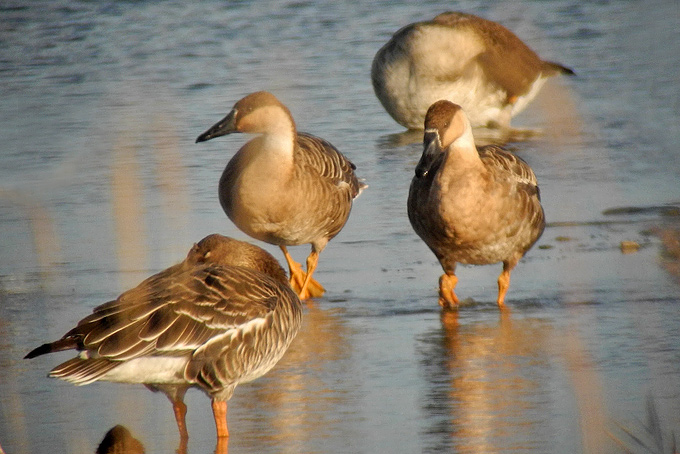
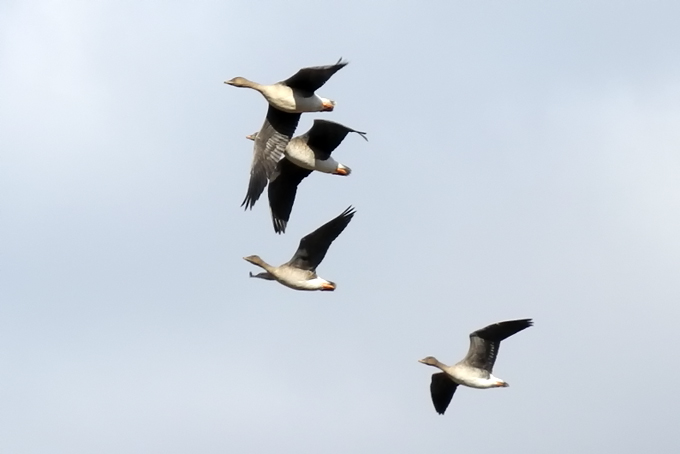
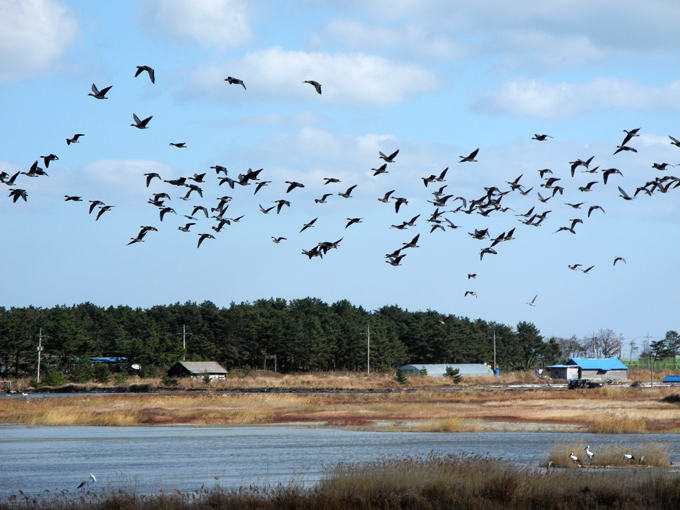
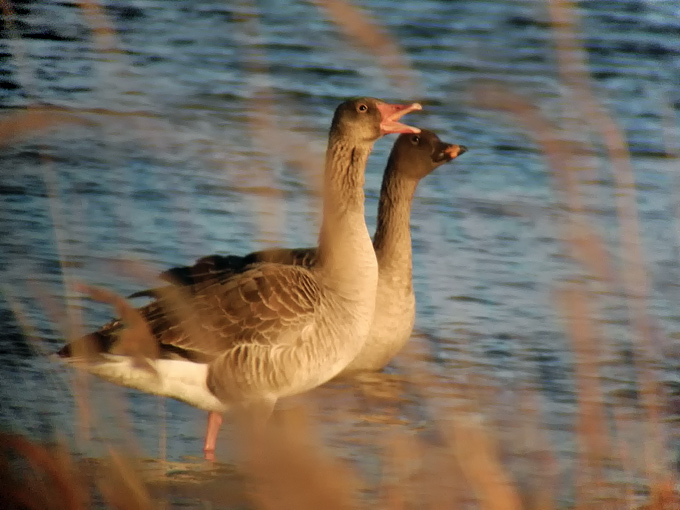

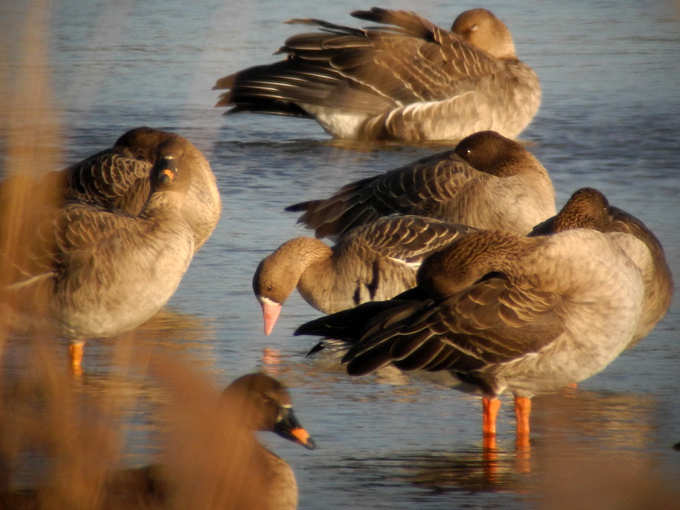
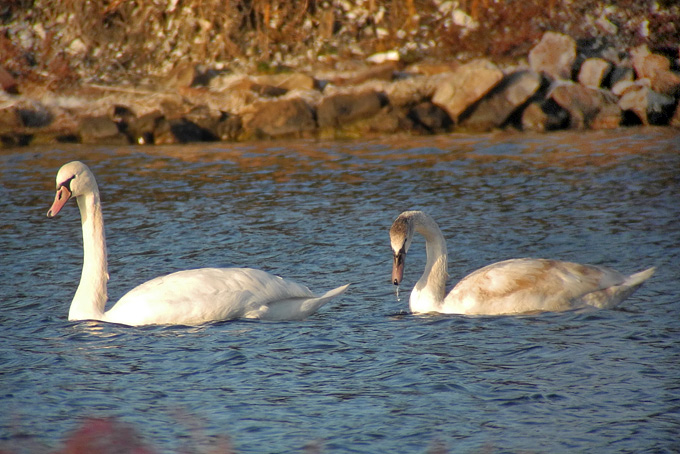
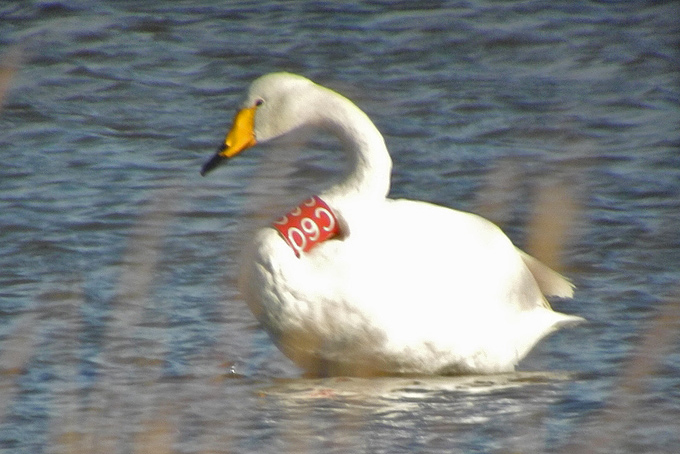
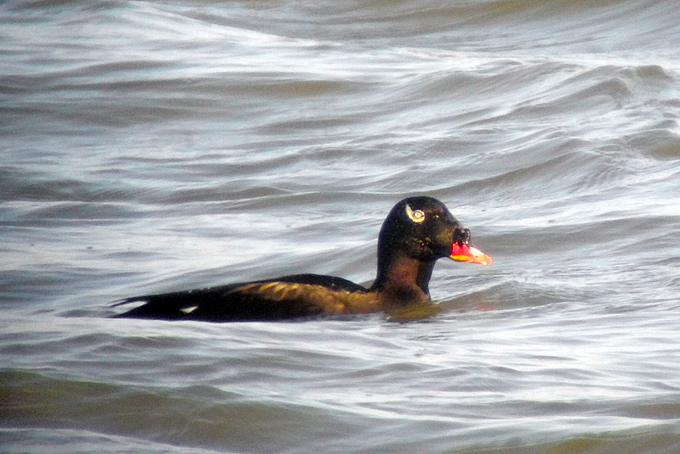

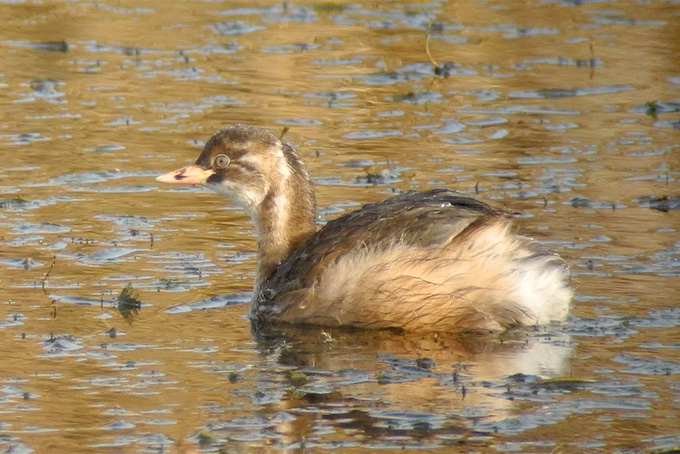
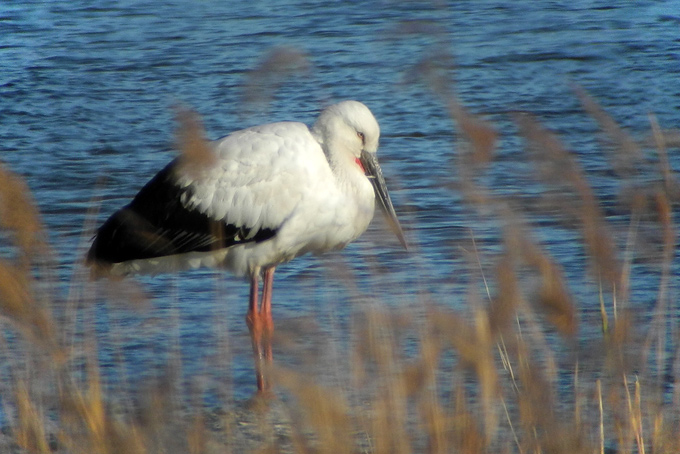
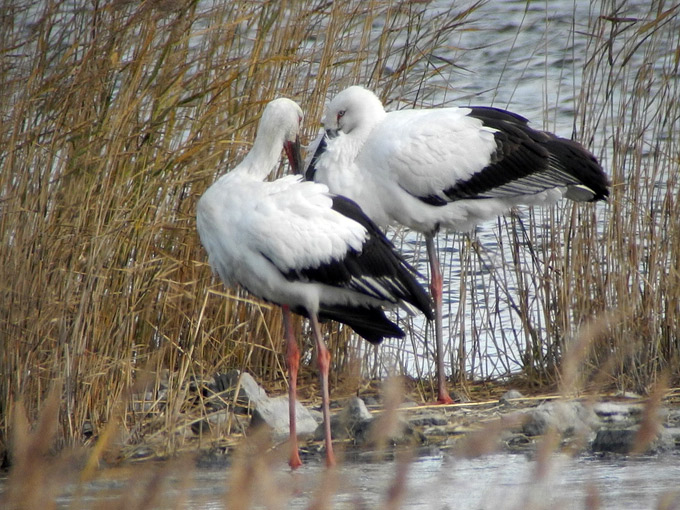

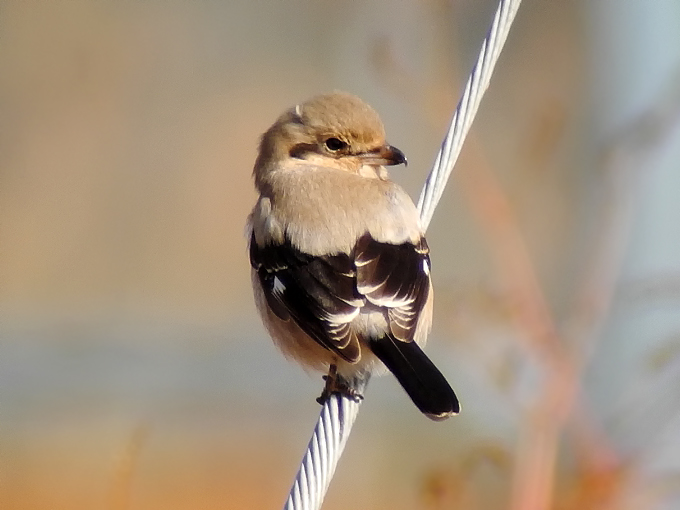
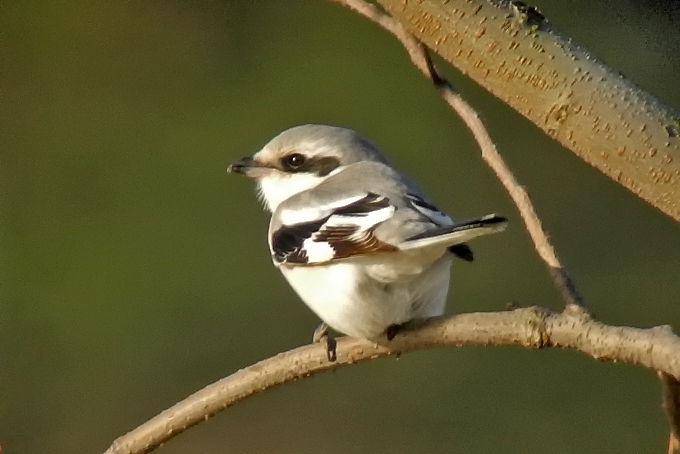
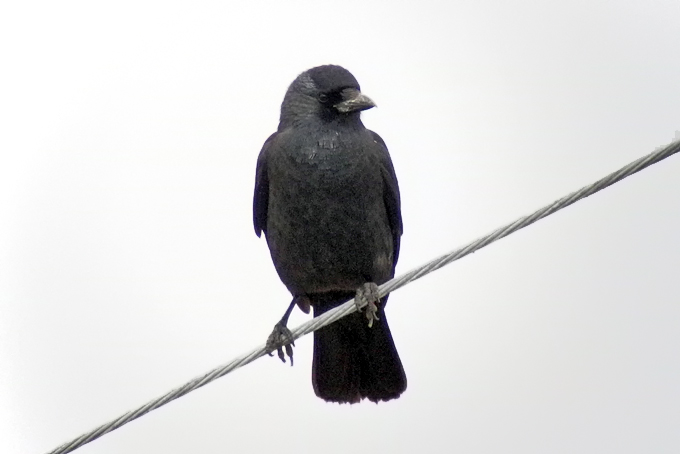
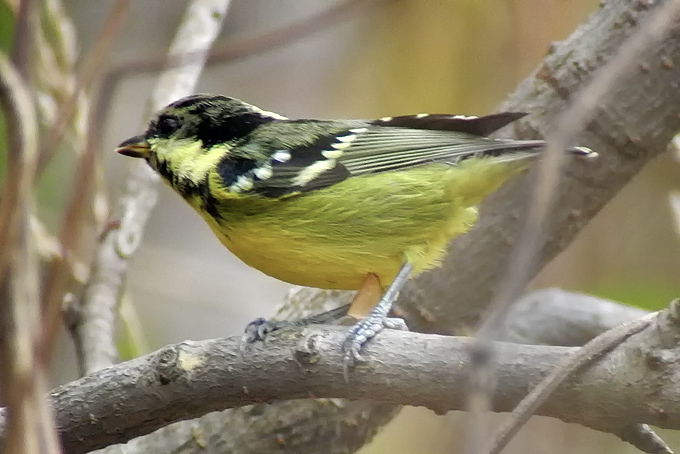
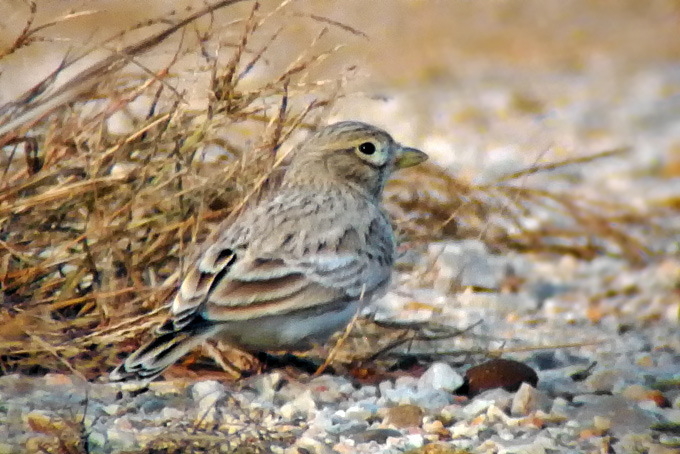
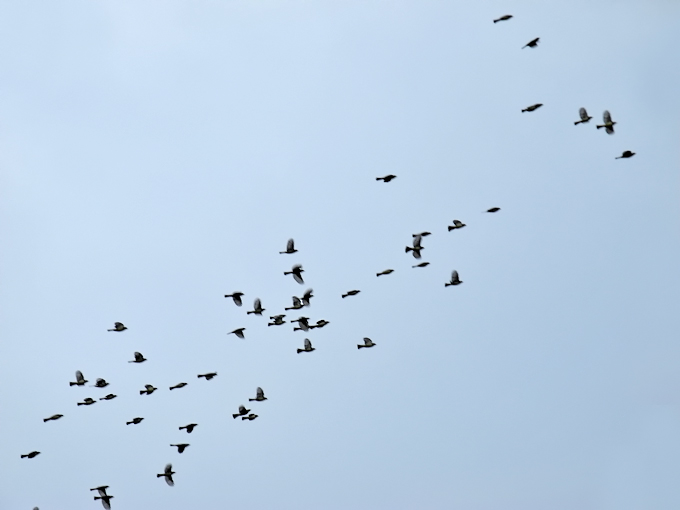
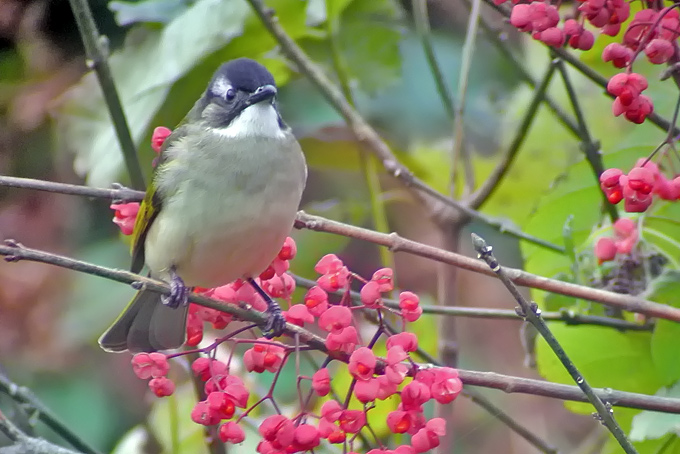
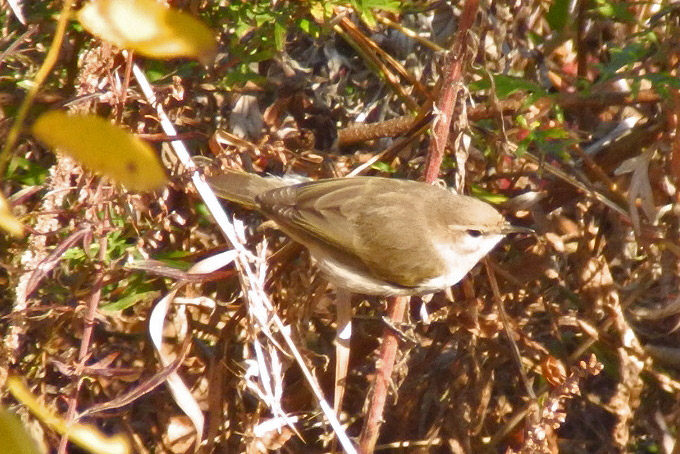
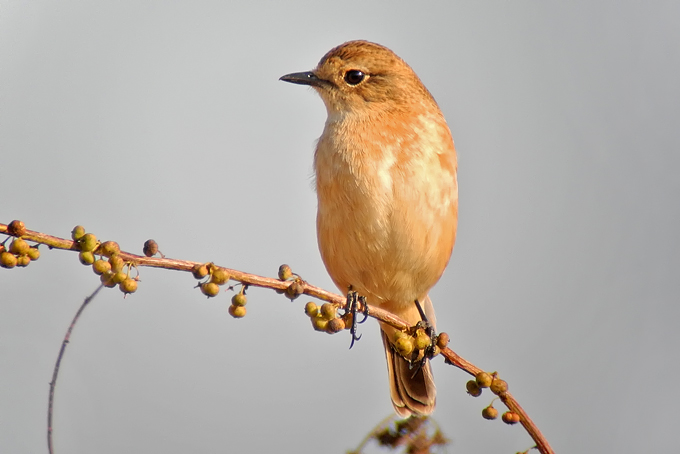
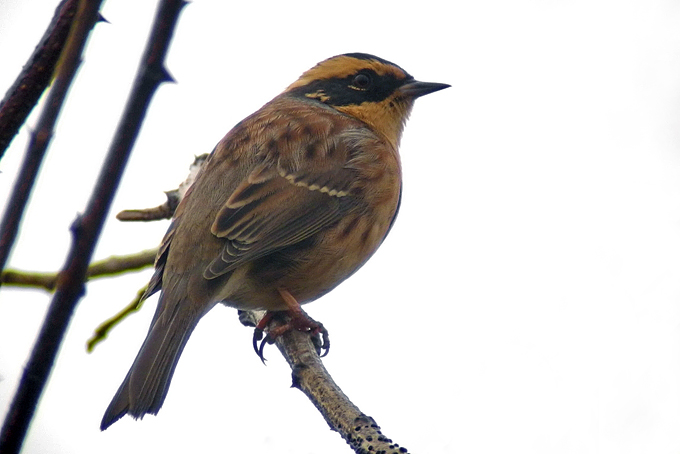

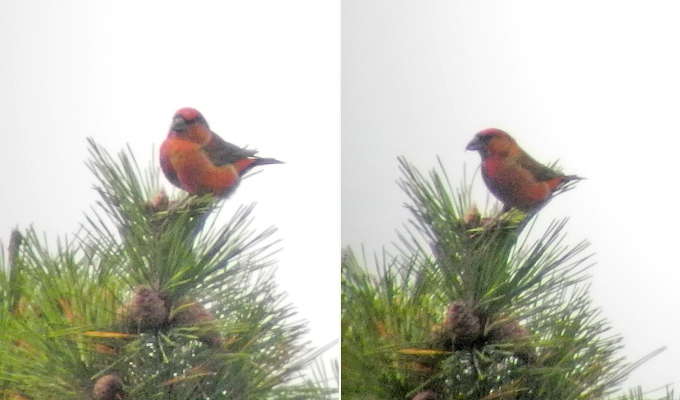
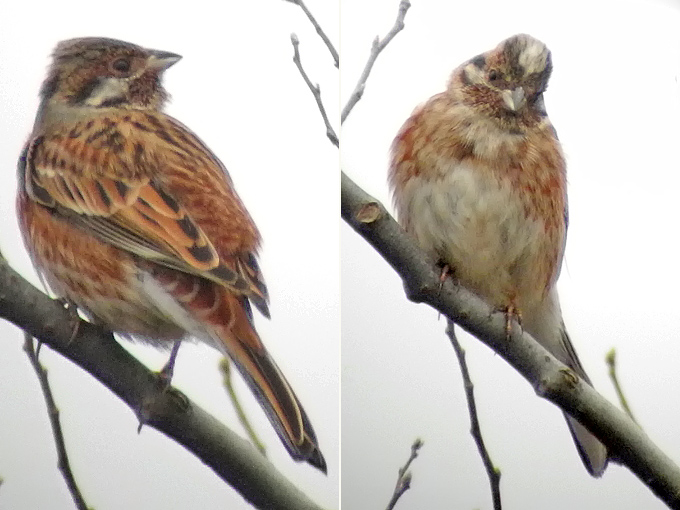
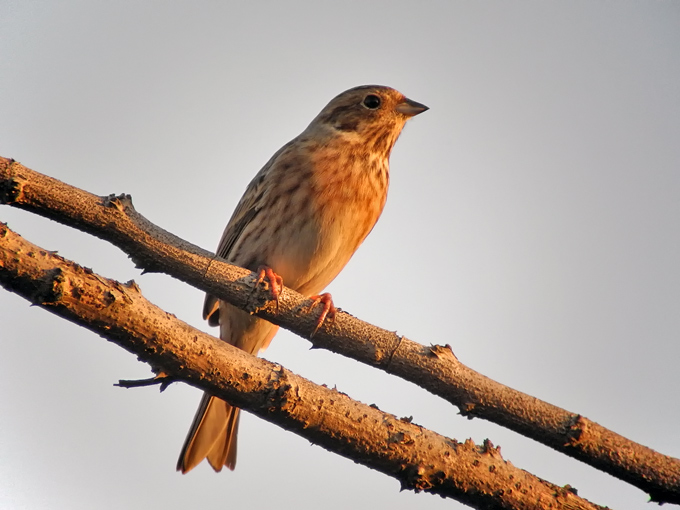
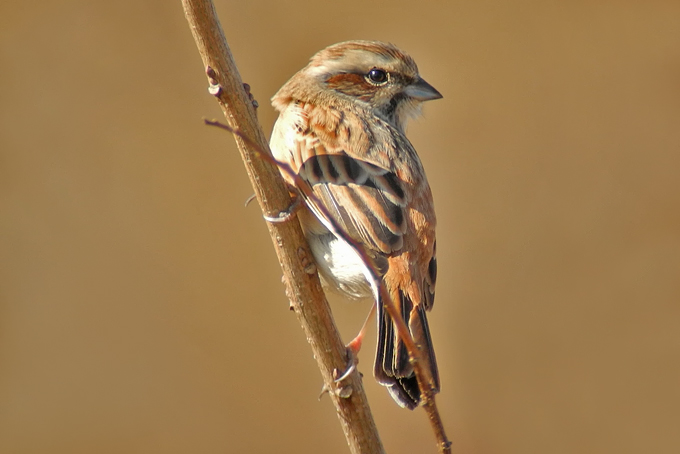

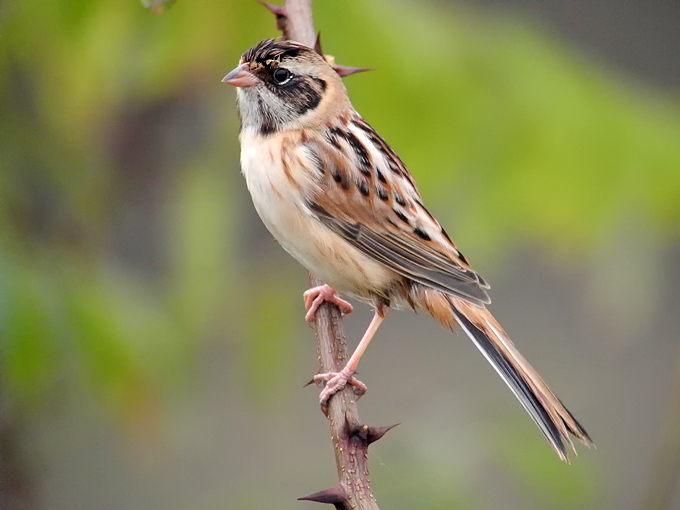


National Arboretum, November 2
Our birding party focused on the Korean National Arboretum, spending the bulk of the day scouring the grounds for migrants. Our spirits (not to mention our clothes, equipment, and everything else) were dampened by the continuous rain that started soon after our arrival. The birding slowed to a crawl while the rain continued, but exploded once the weather broke around 3pm. Below is a list of the species observed throughout the day:
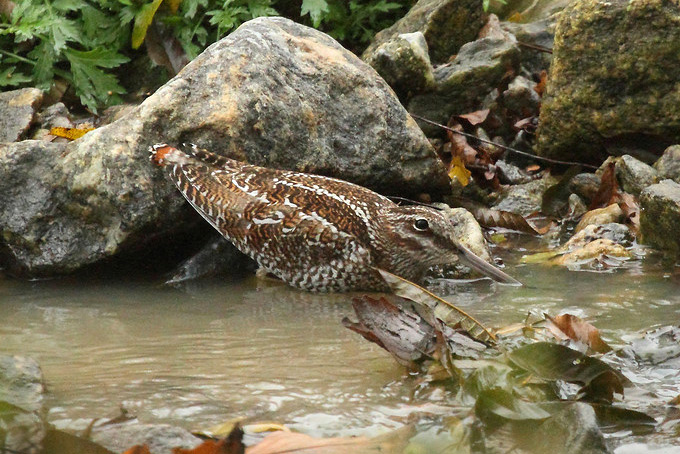

Birds Korea 1108 Ho, 3 Dong, Samick Tower Apt., 148-22, Namcheon-Dong, Su-Young-Gu
Busan, 618-762 Republic of Korea





